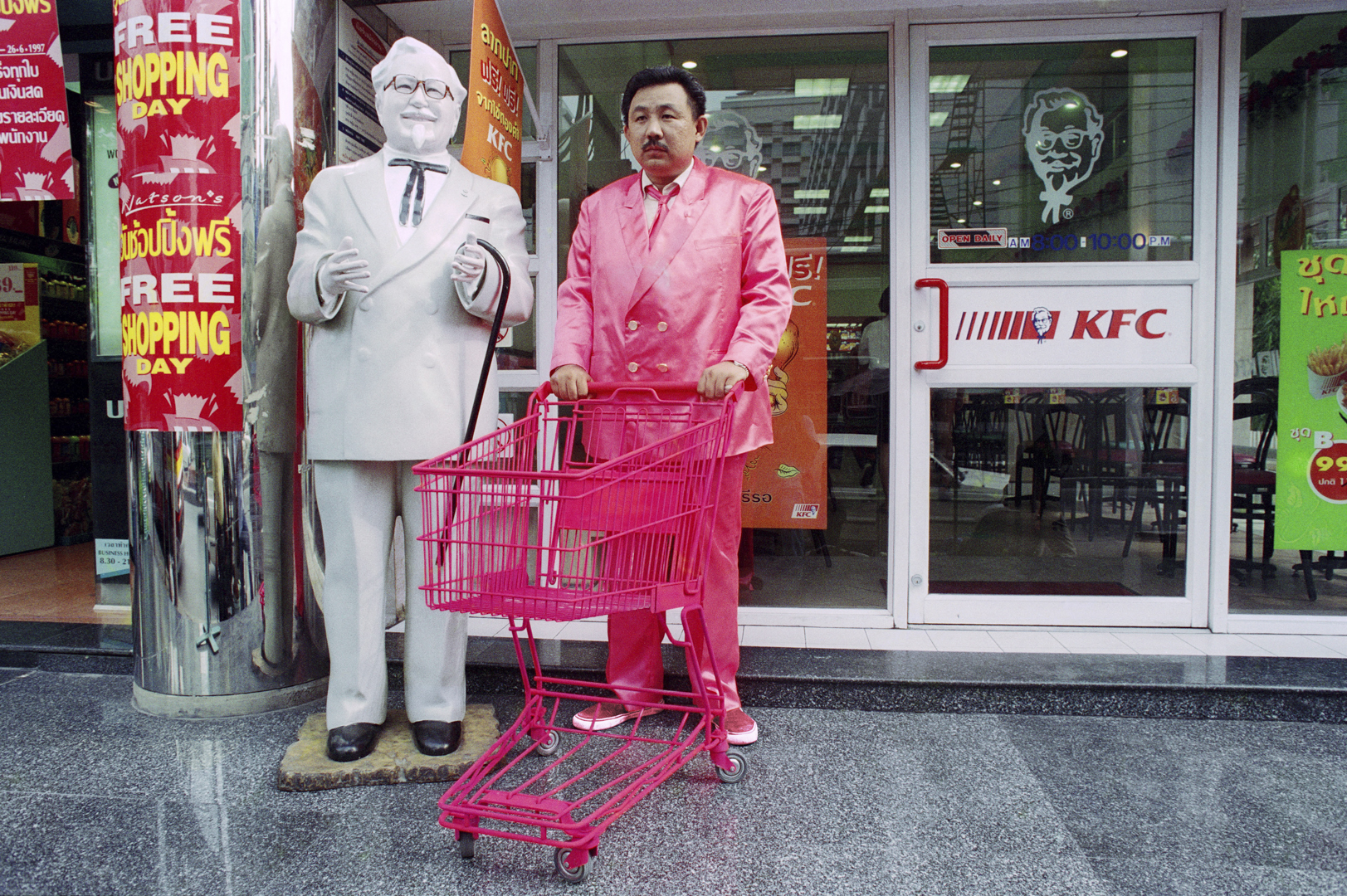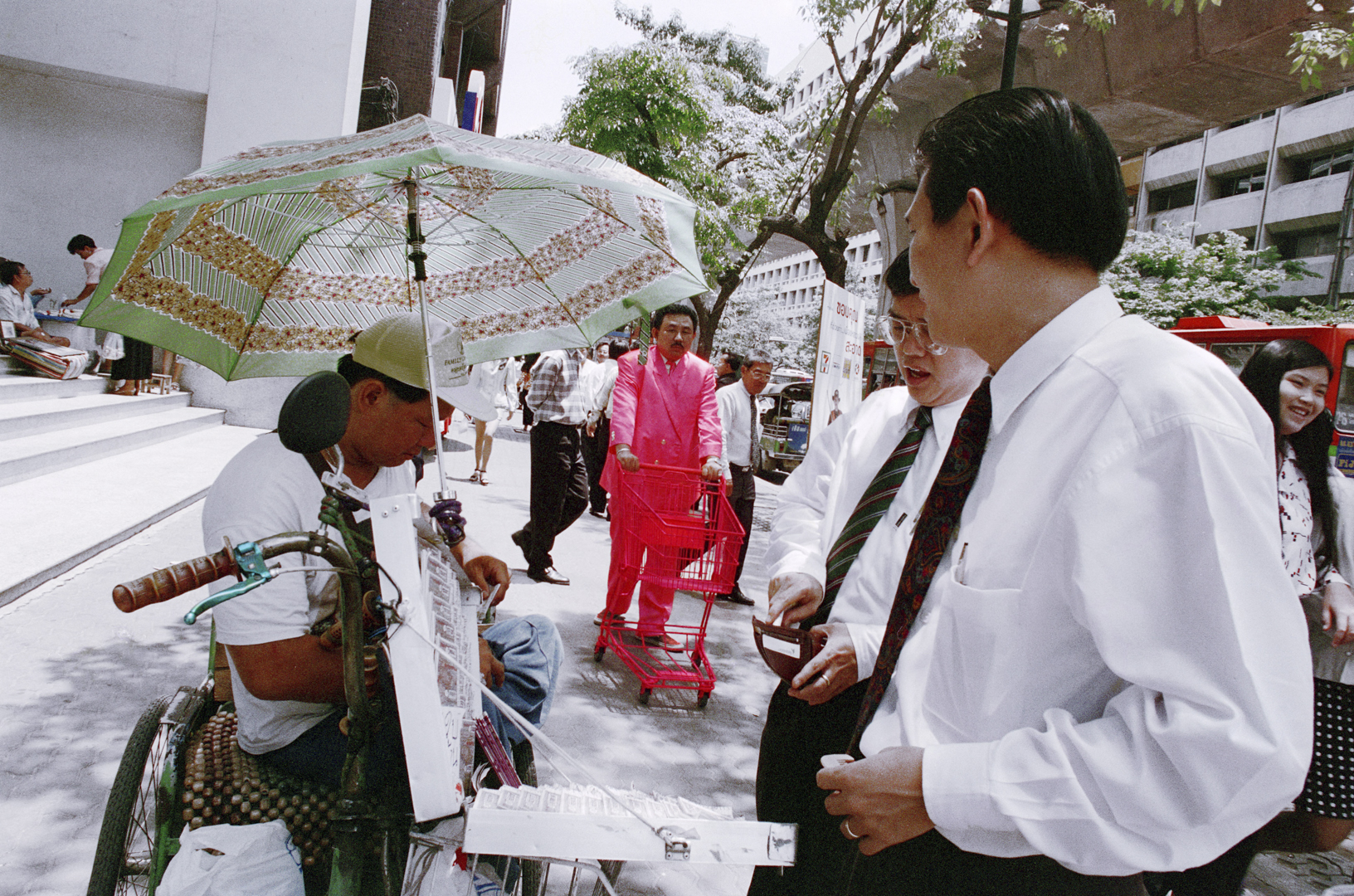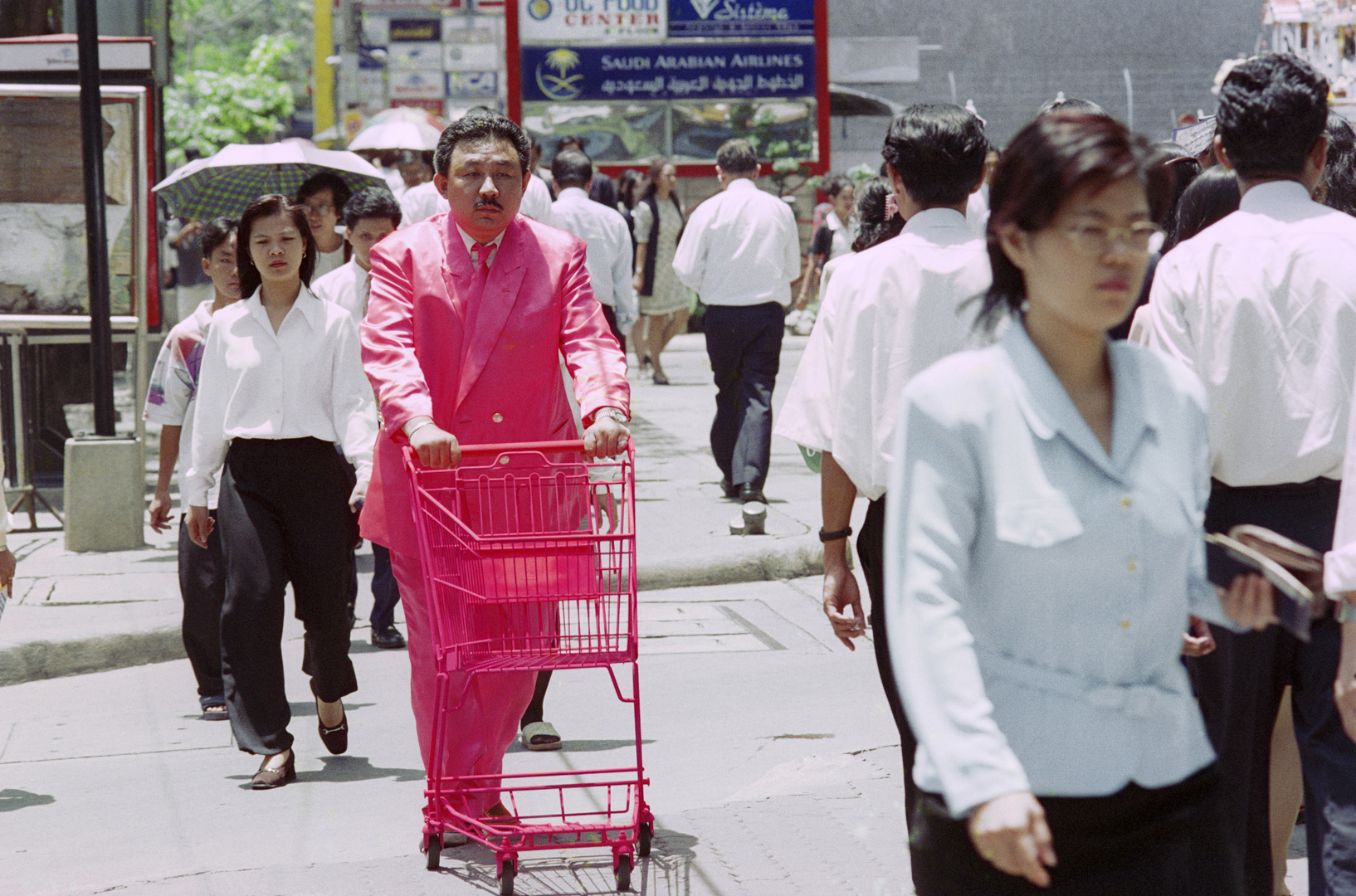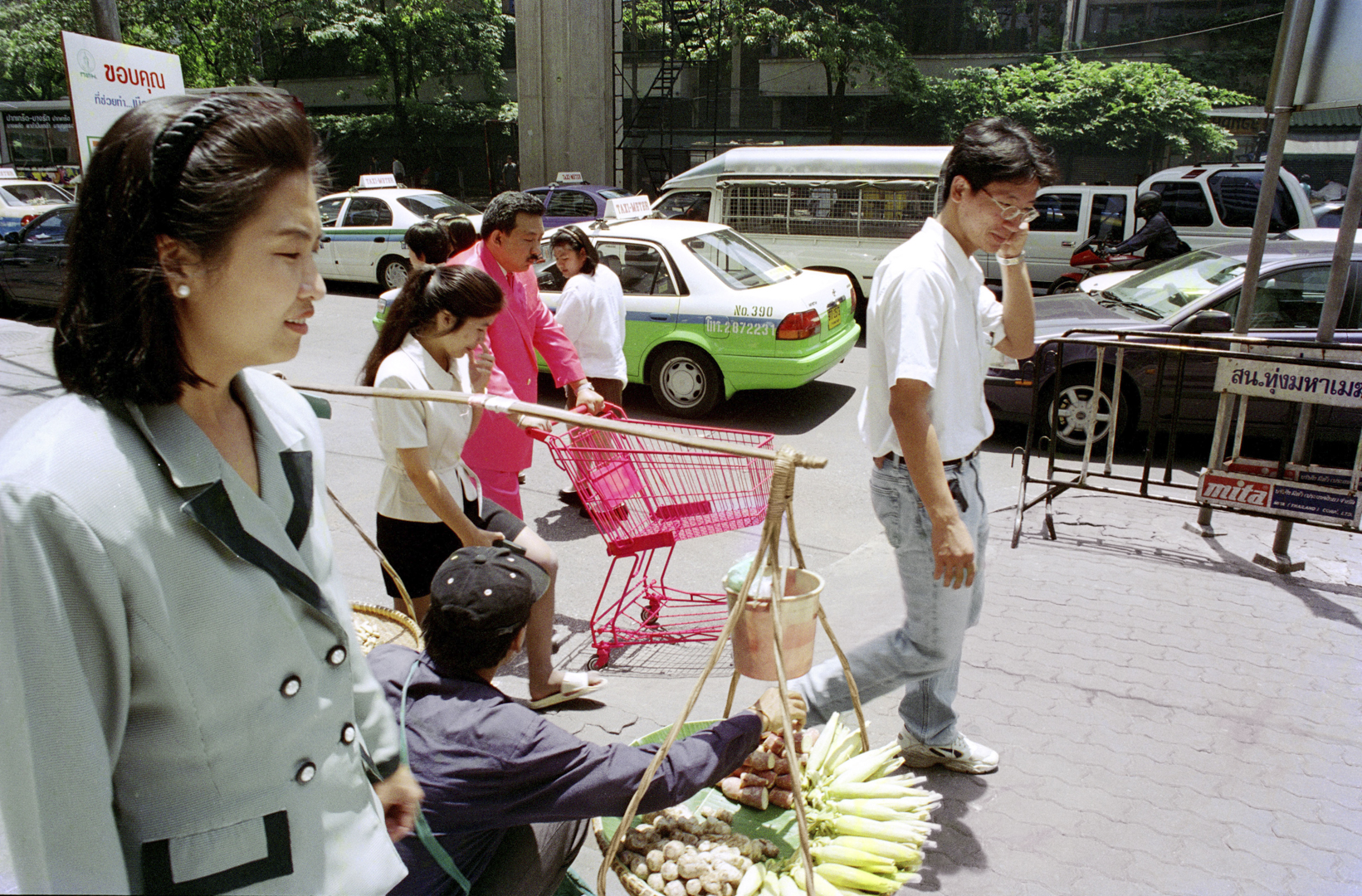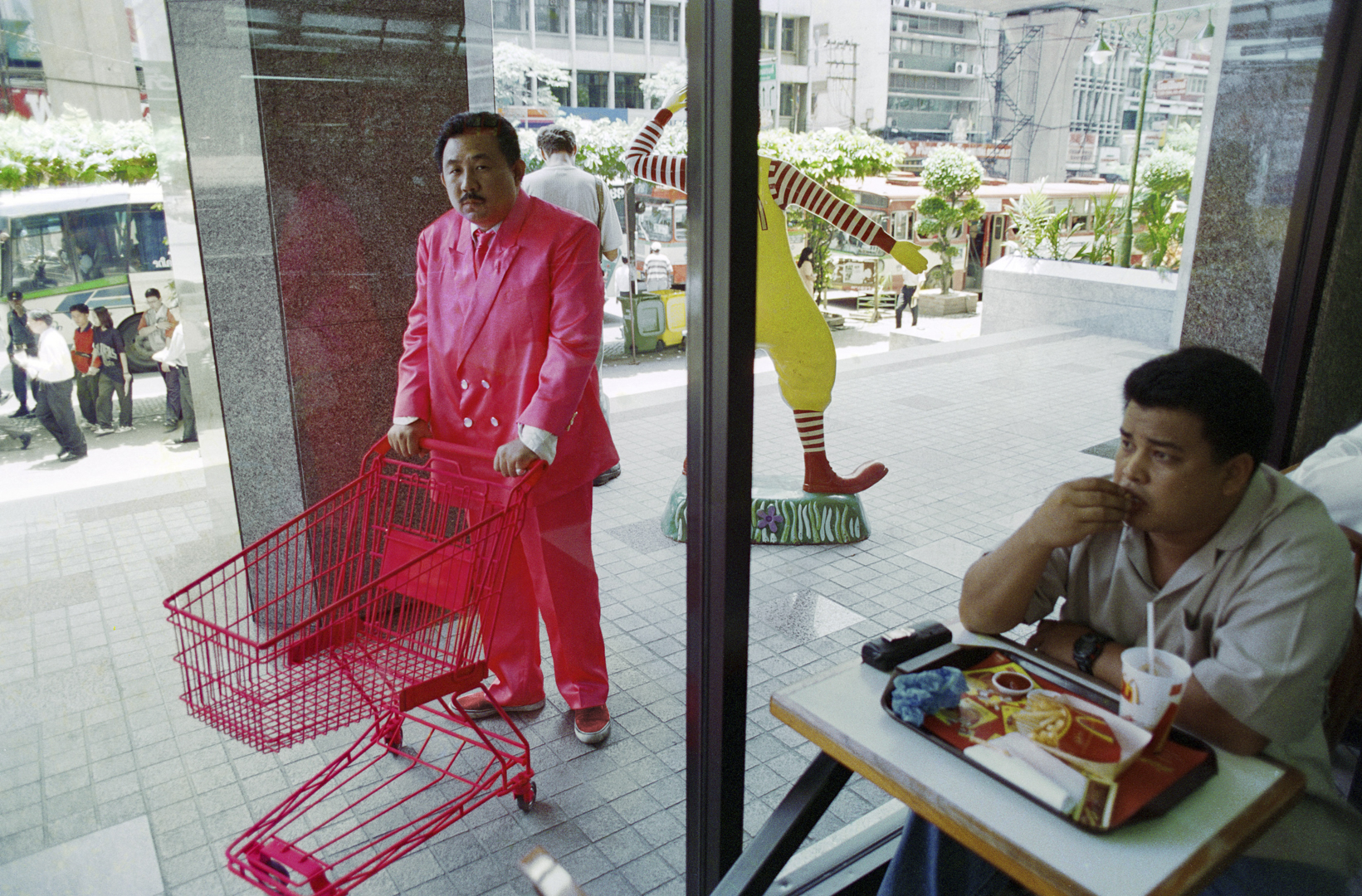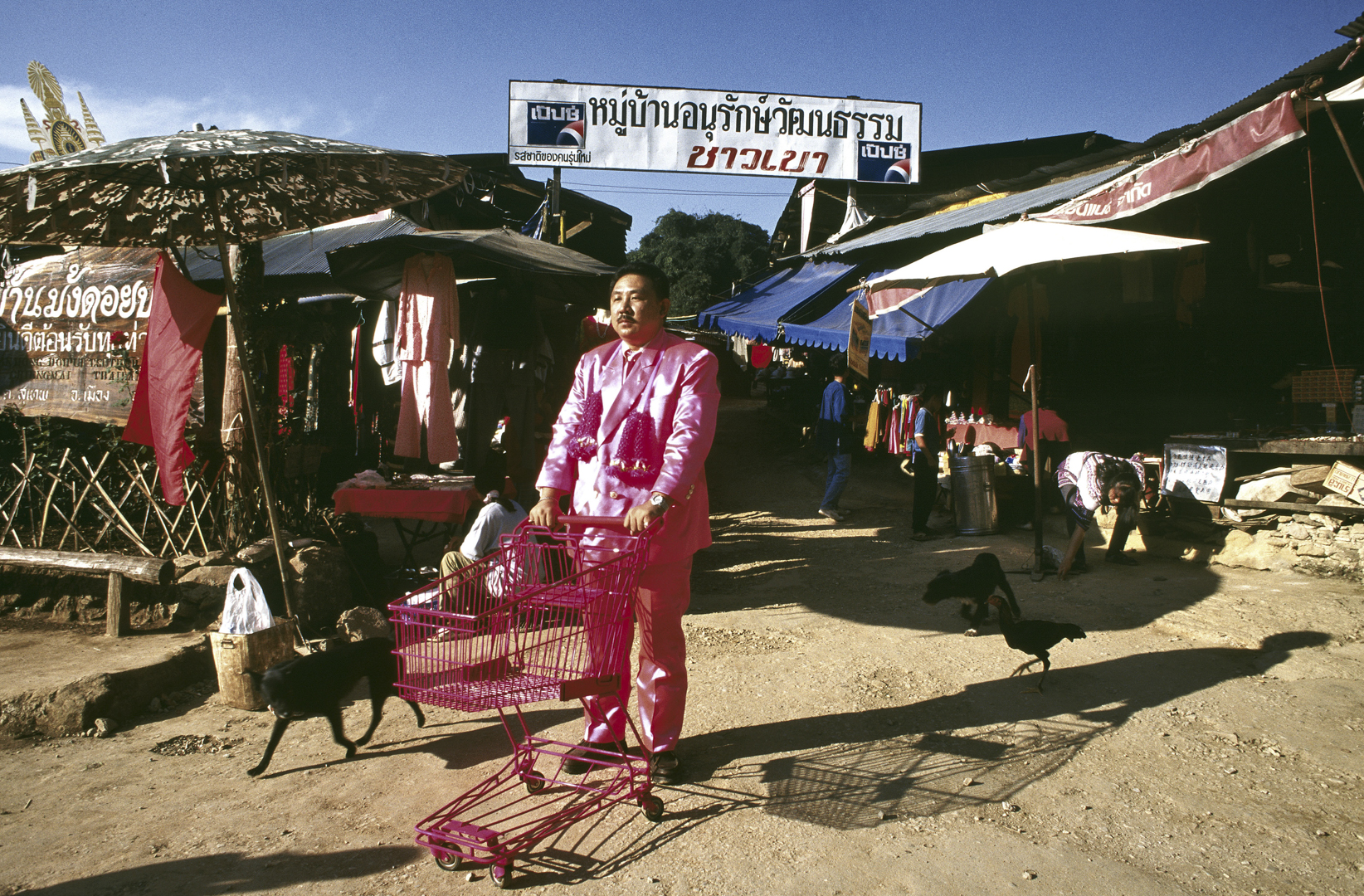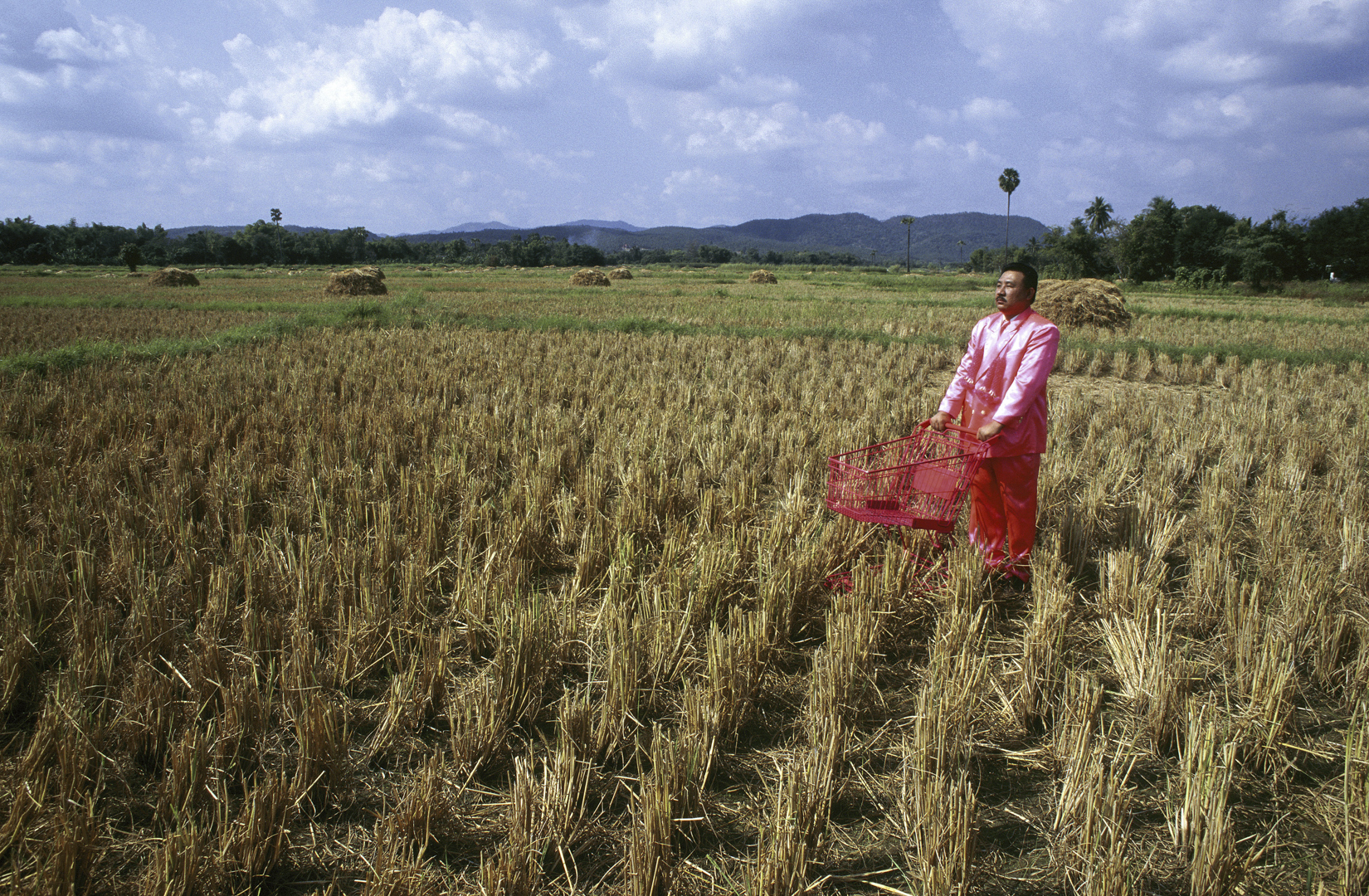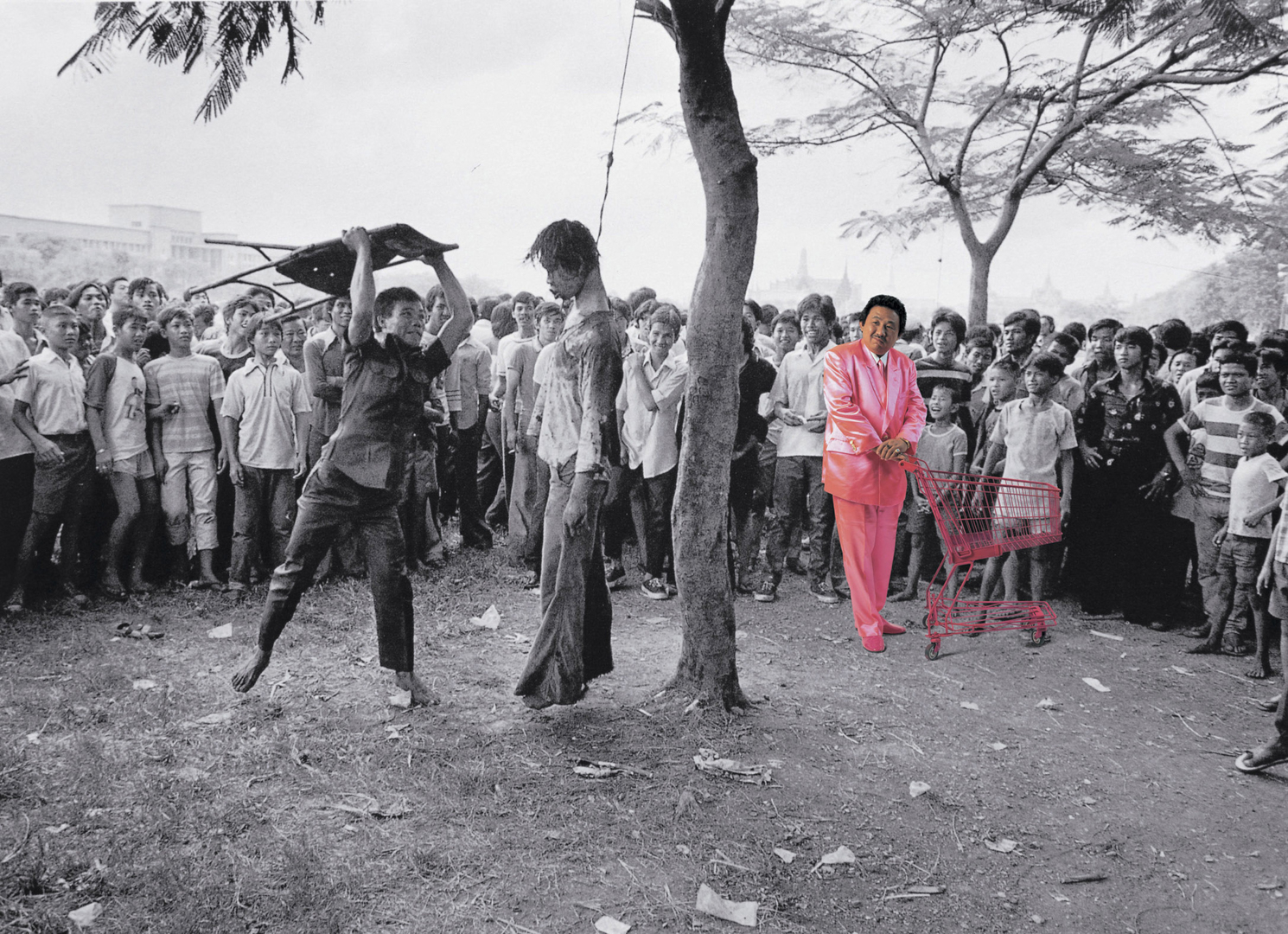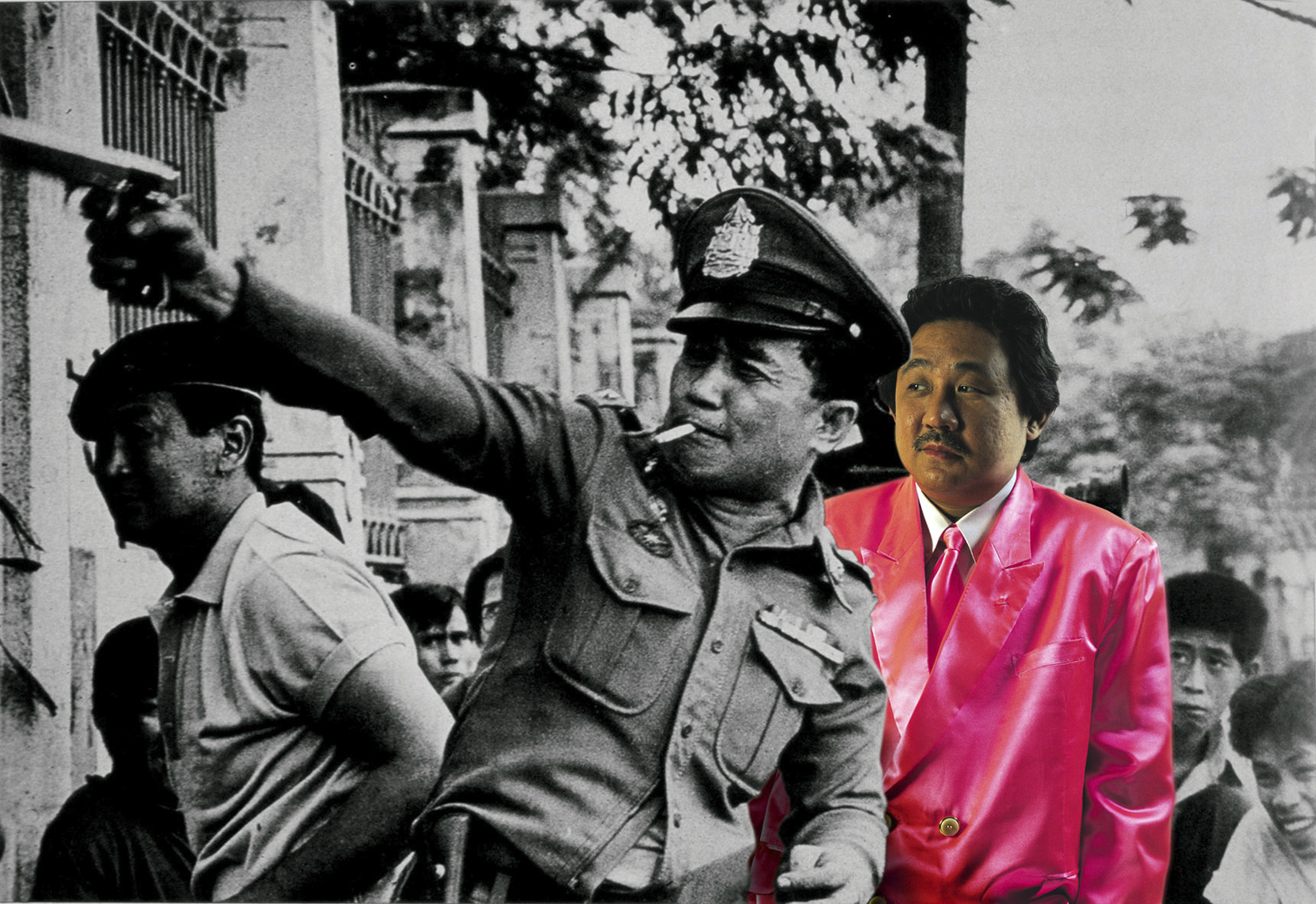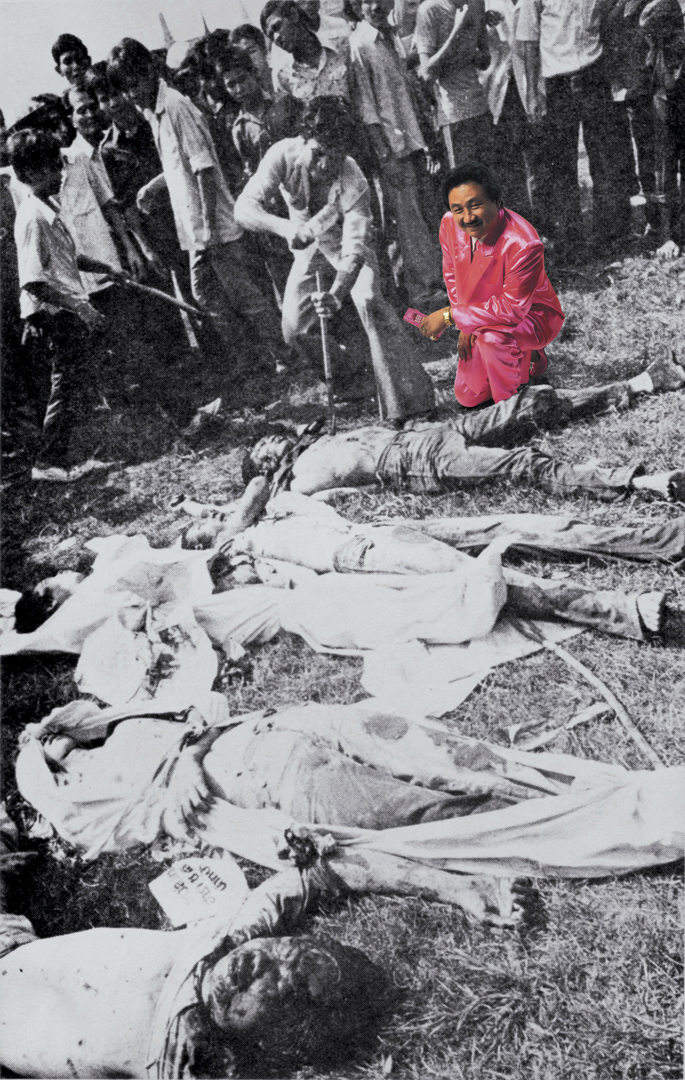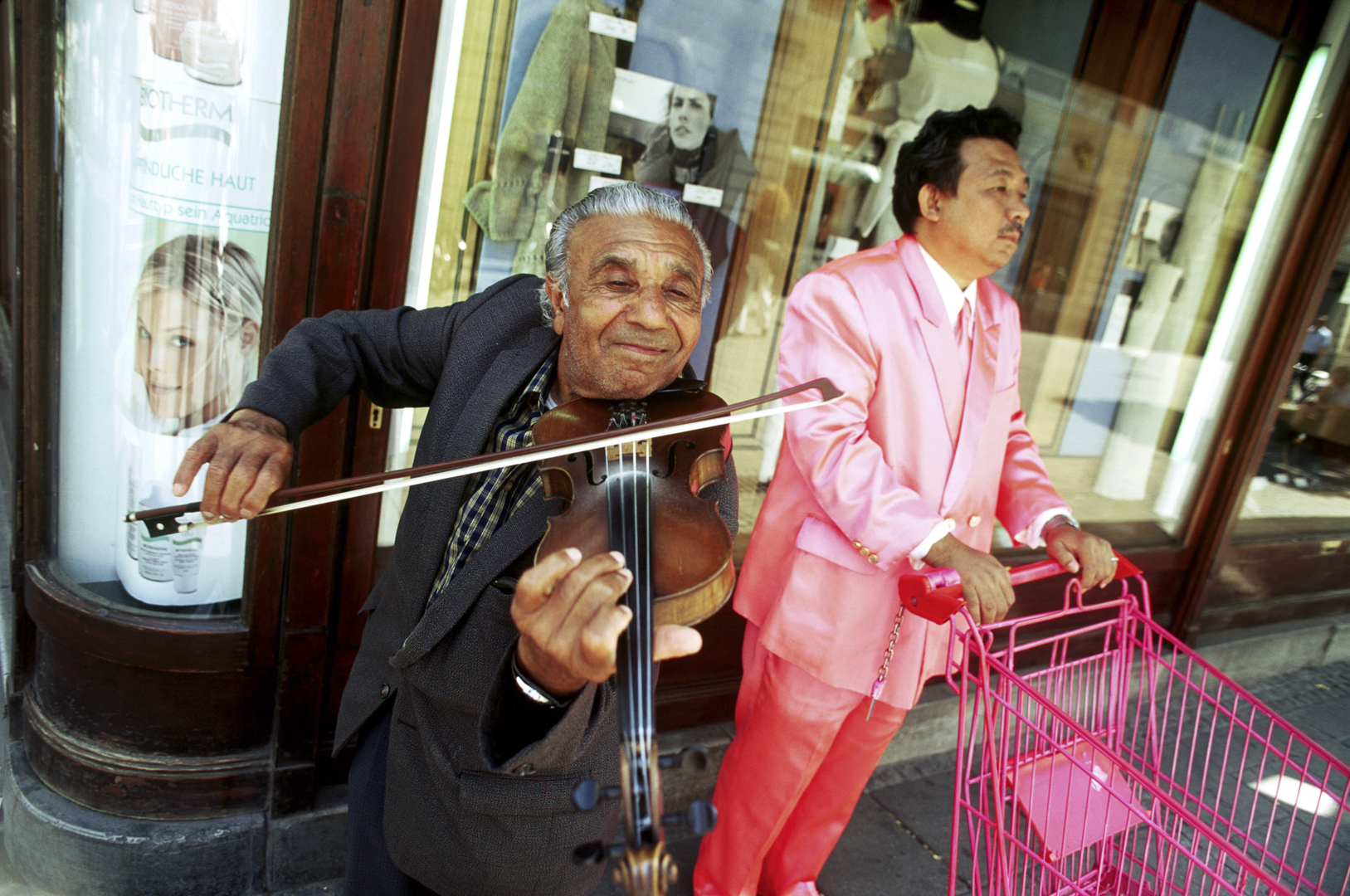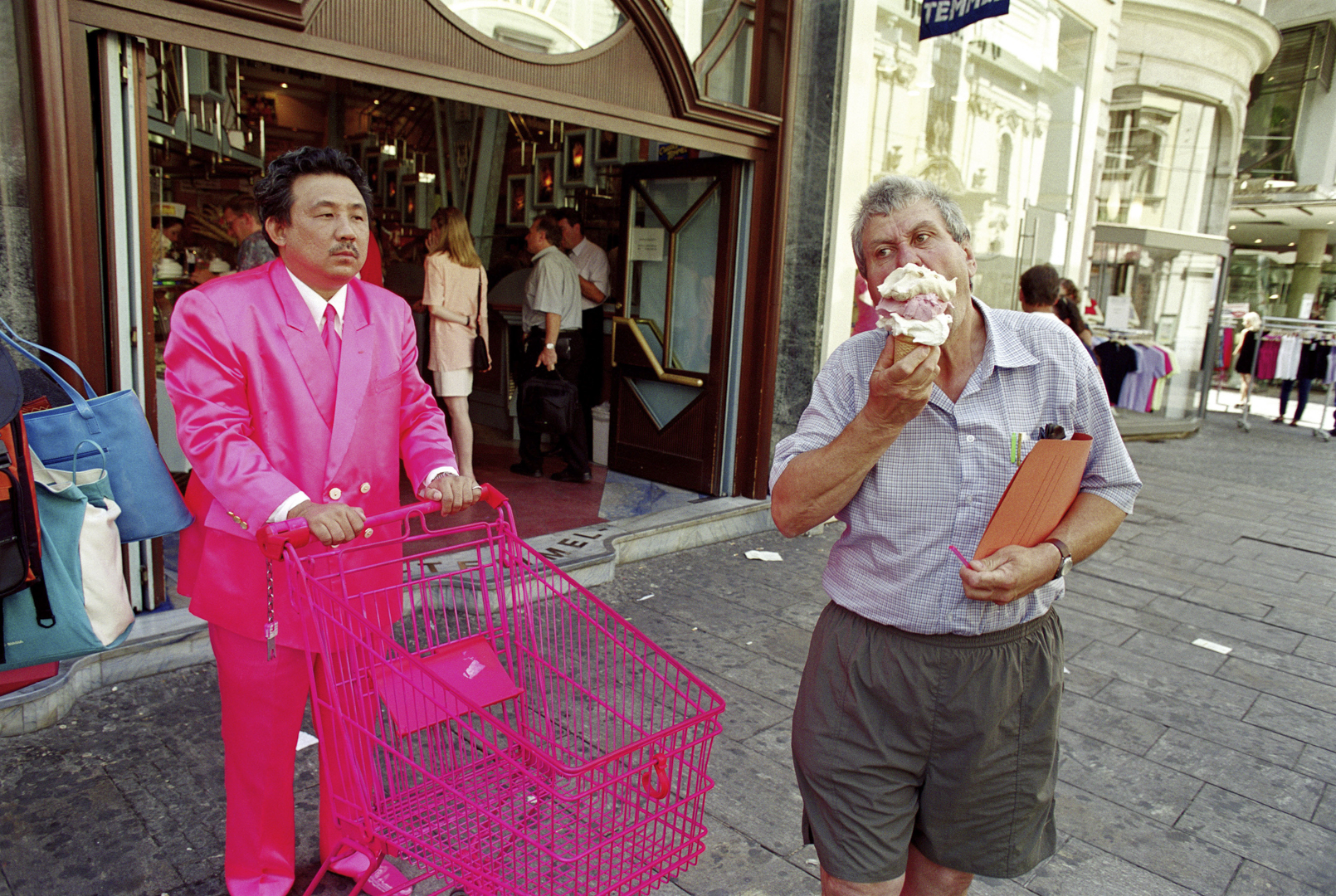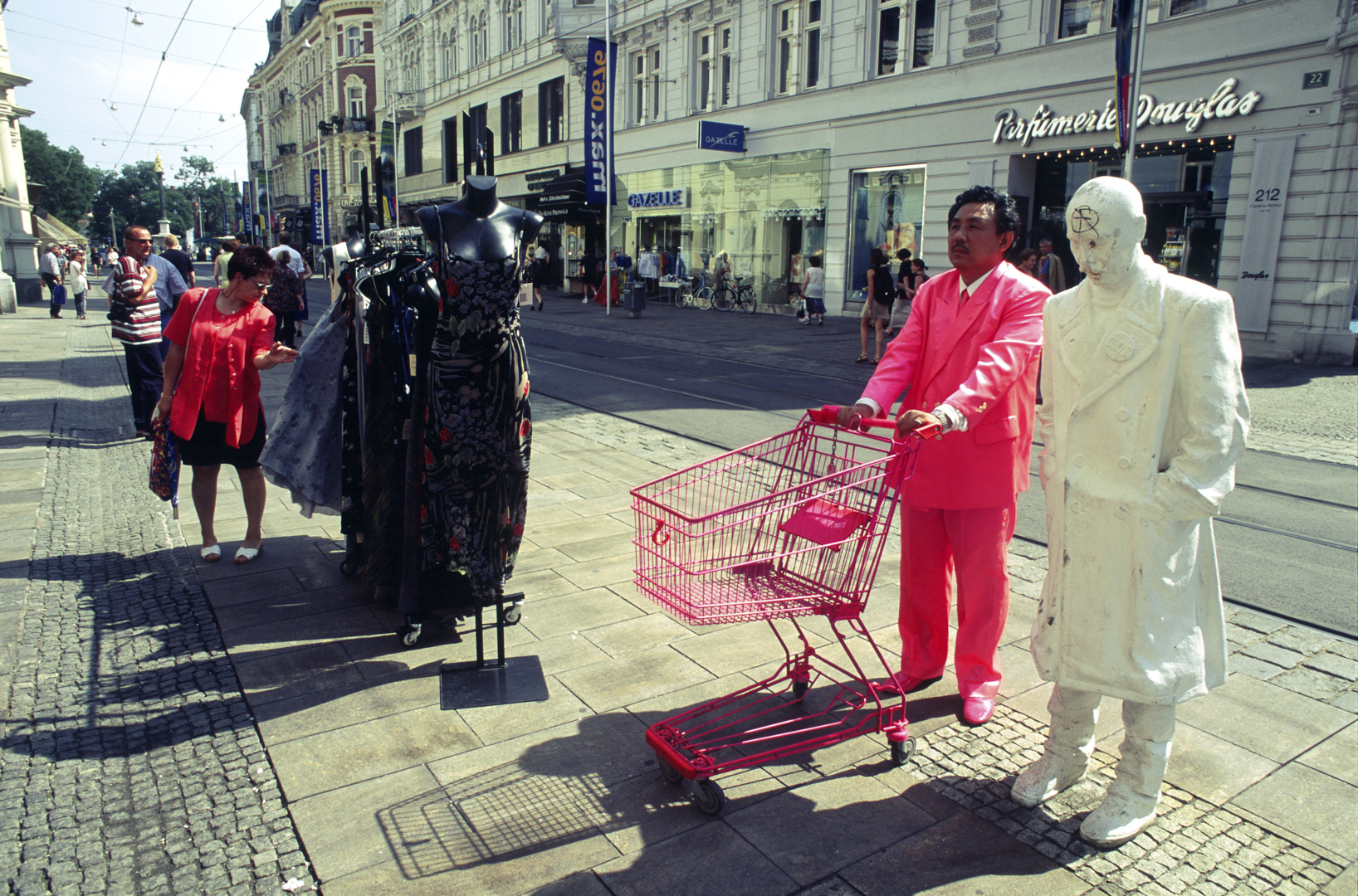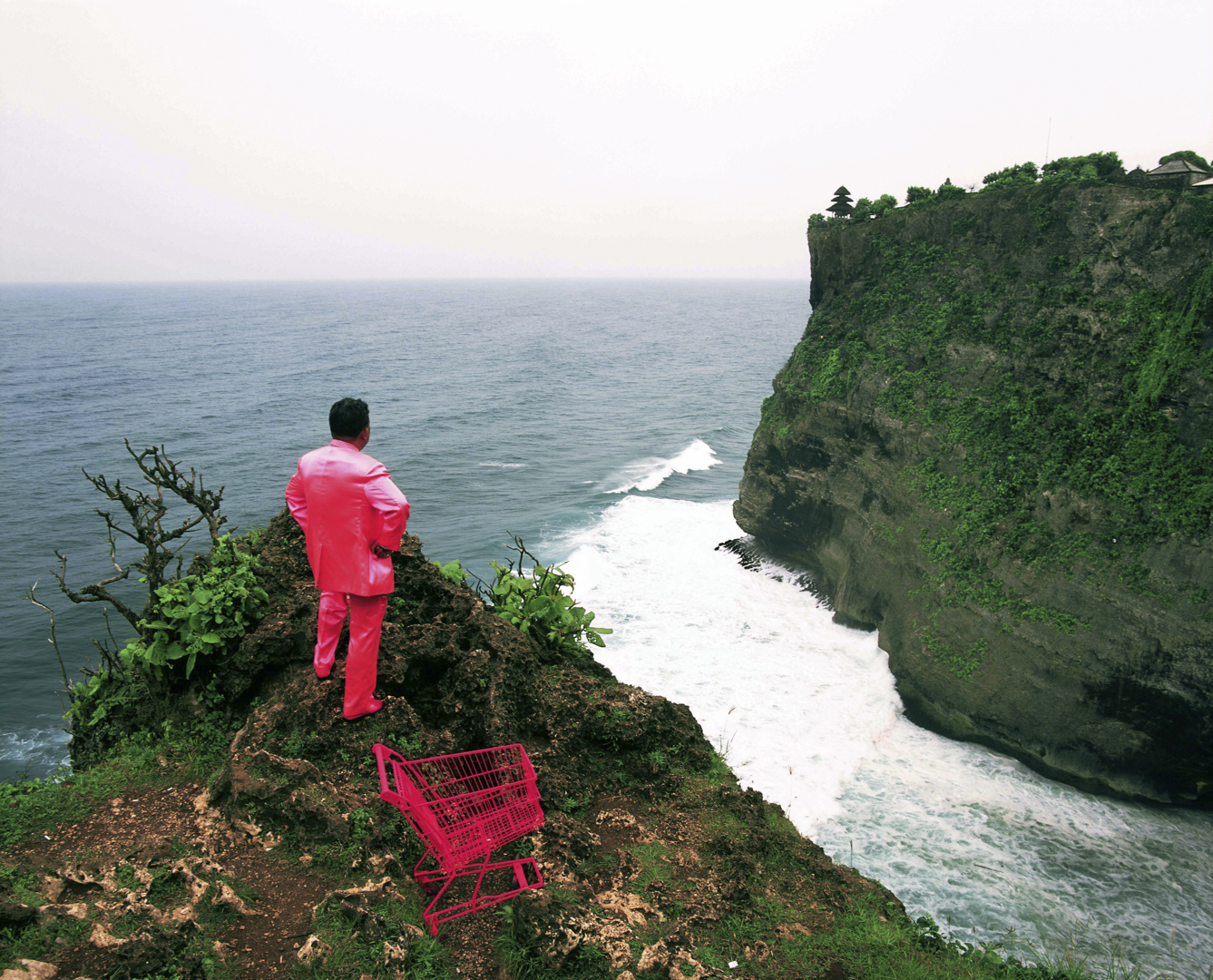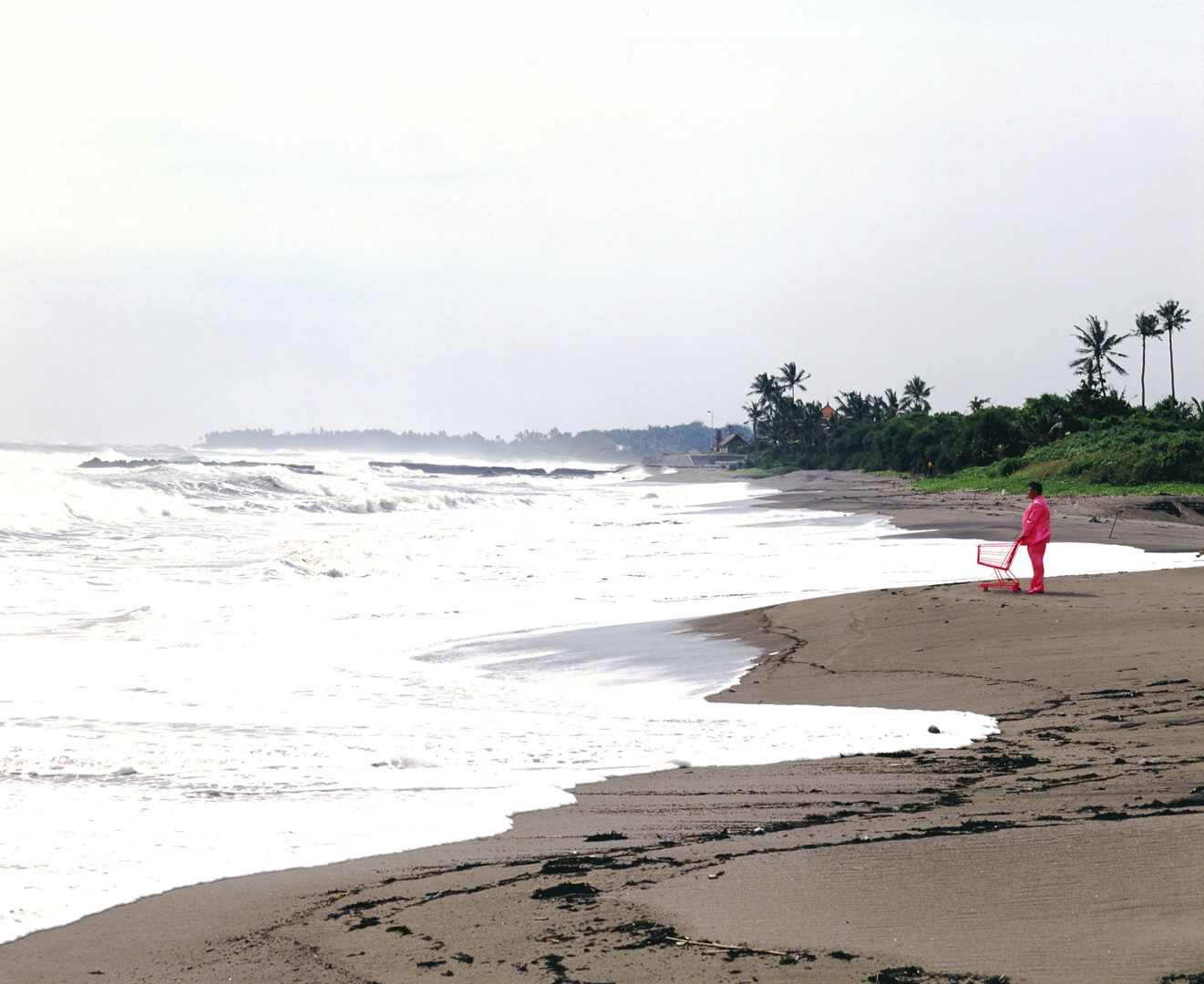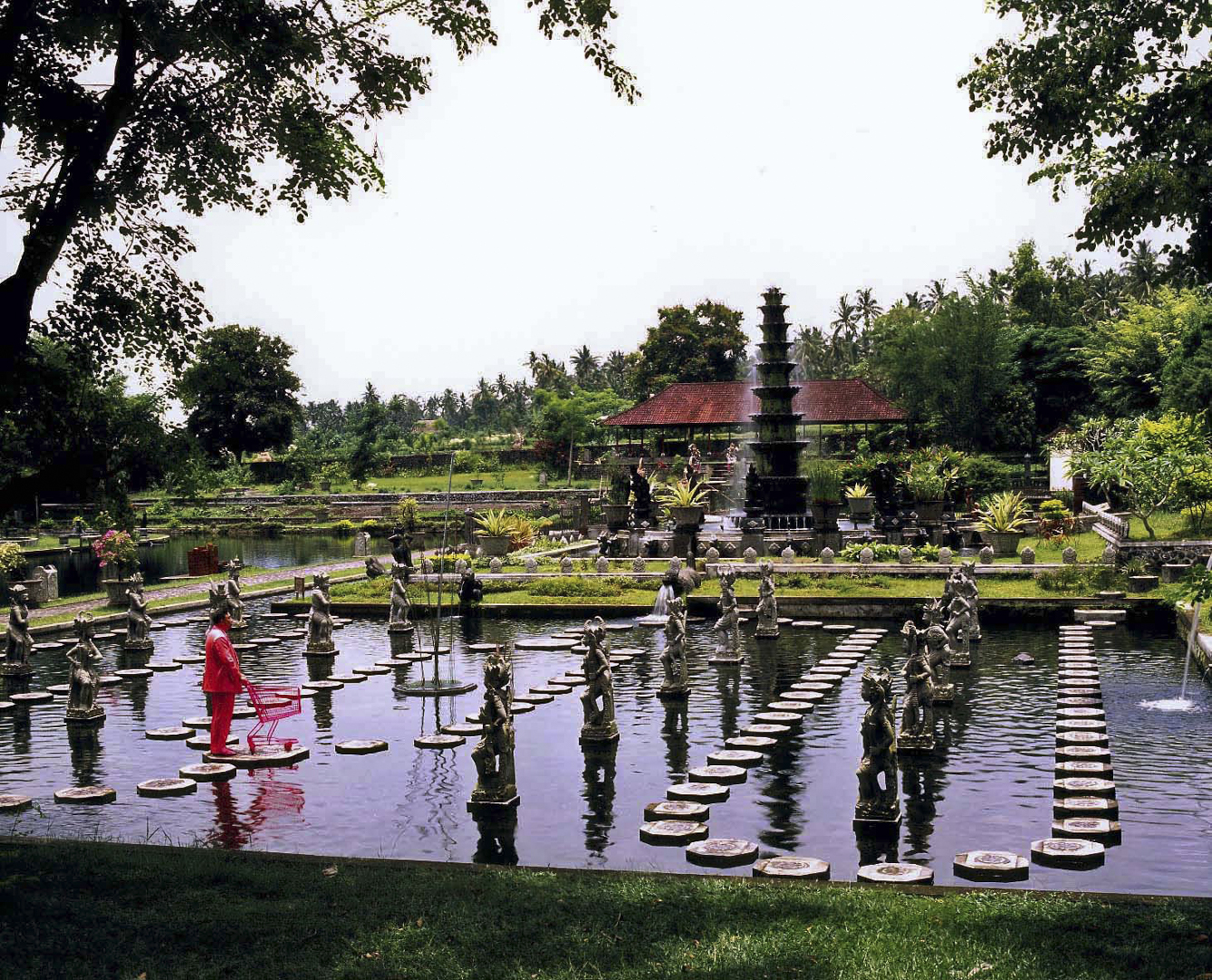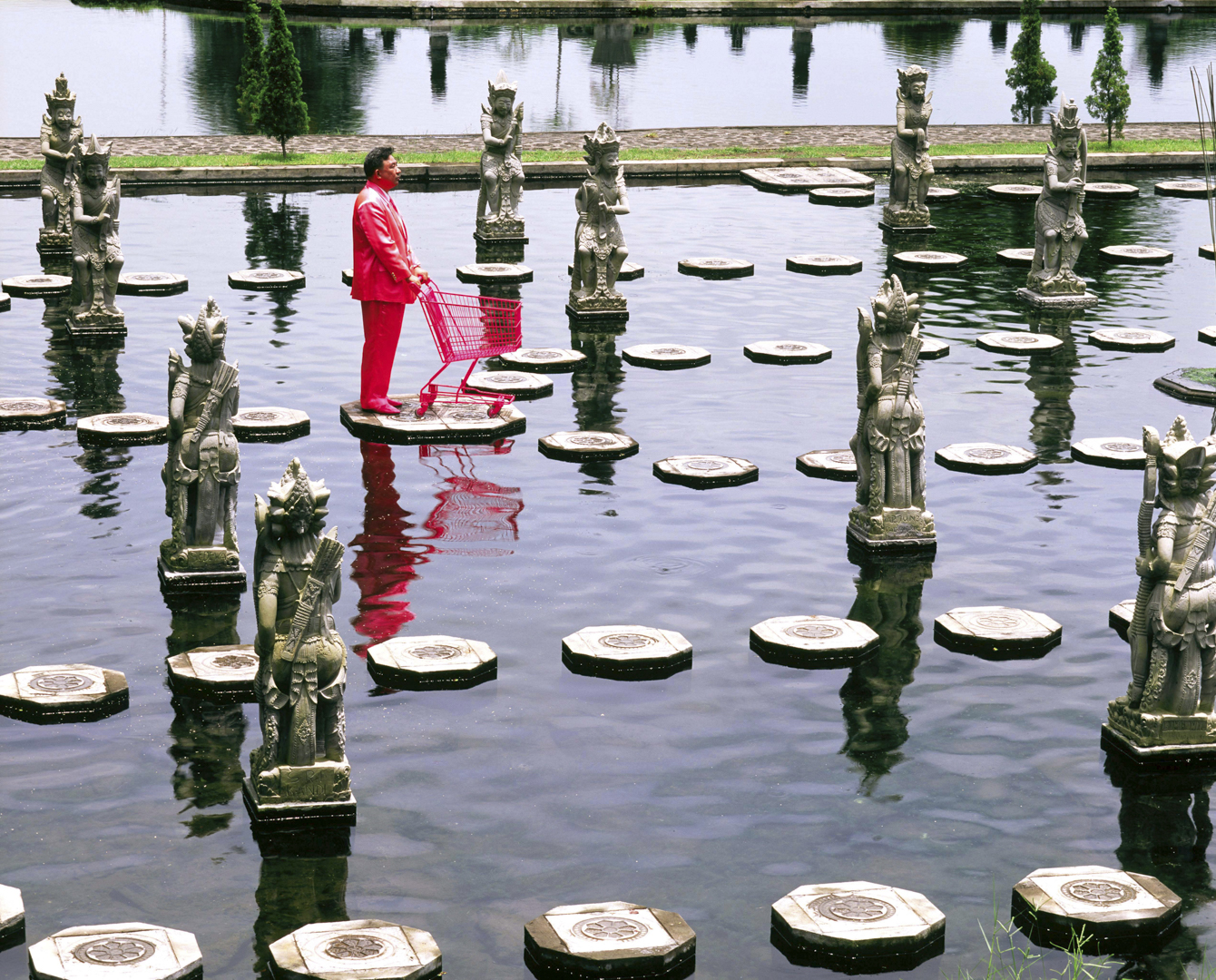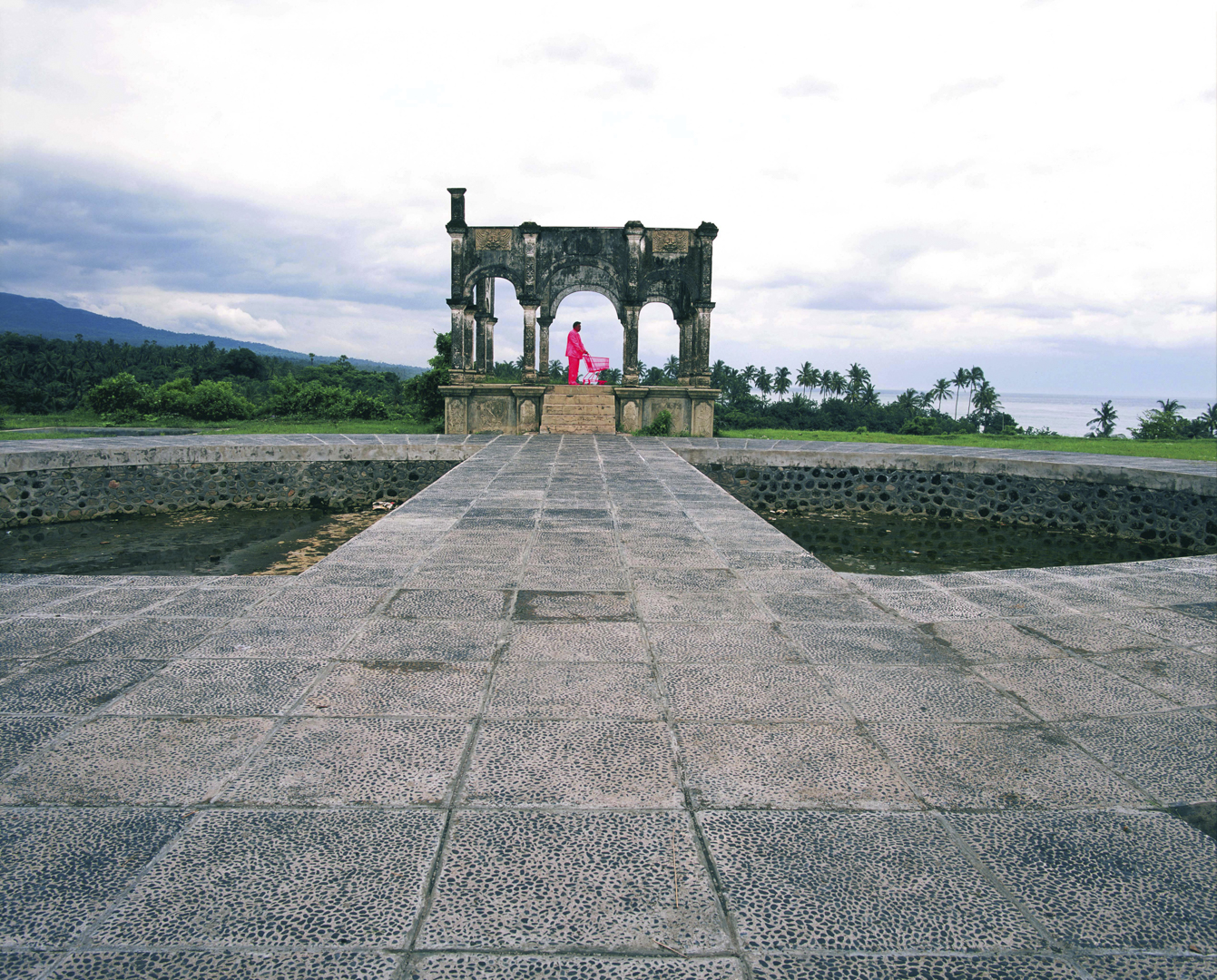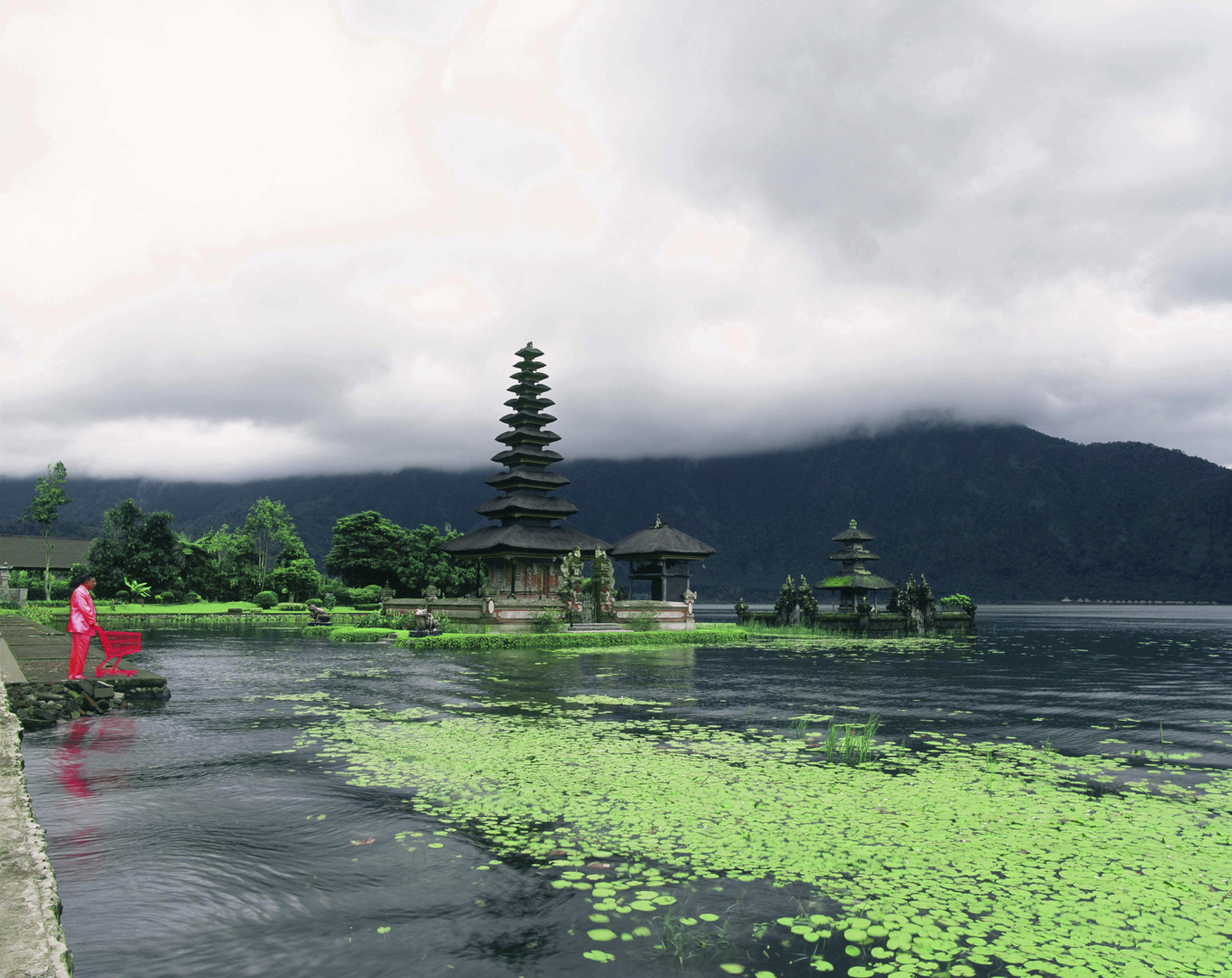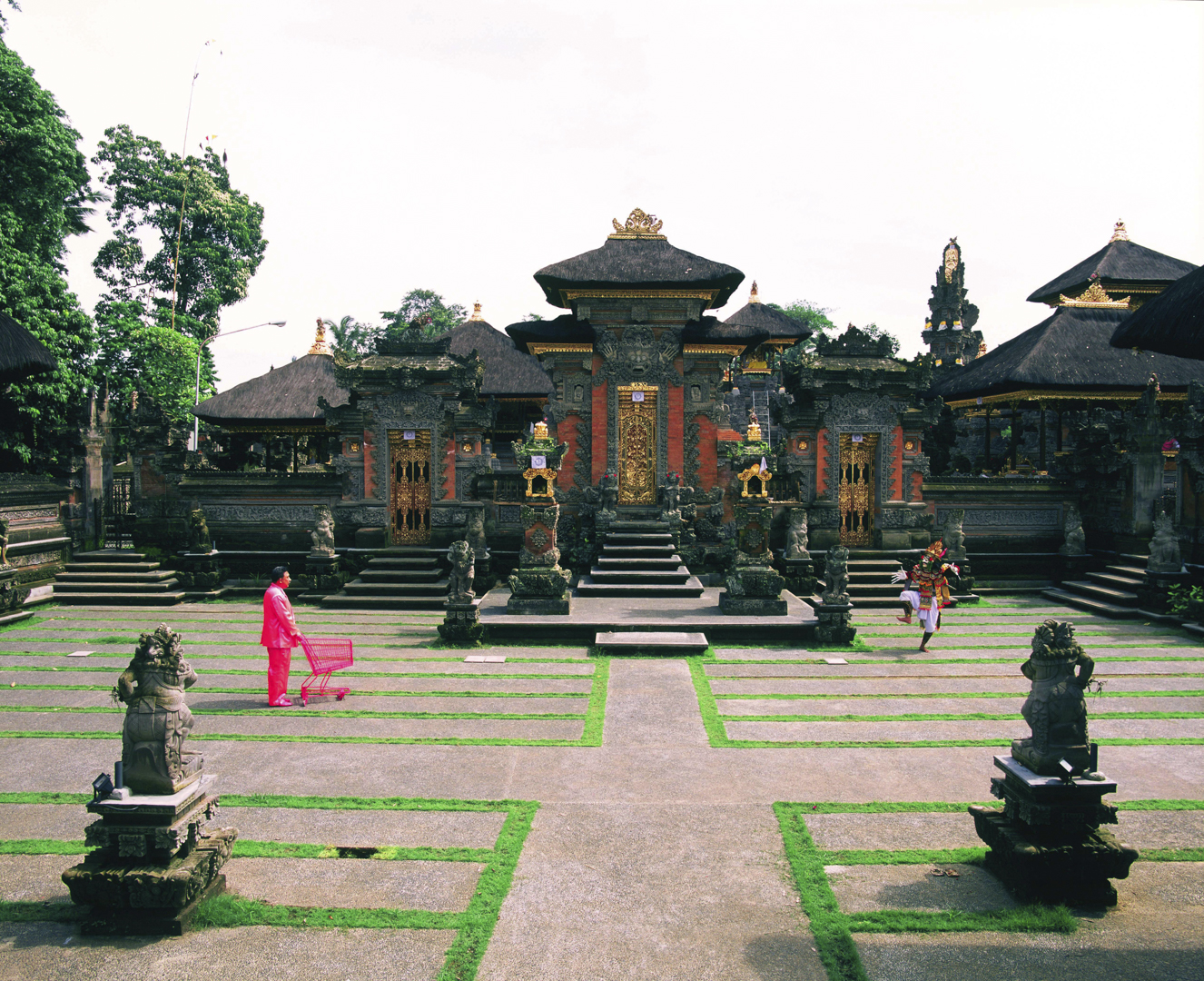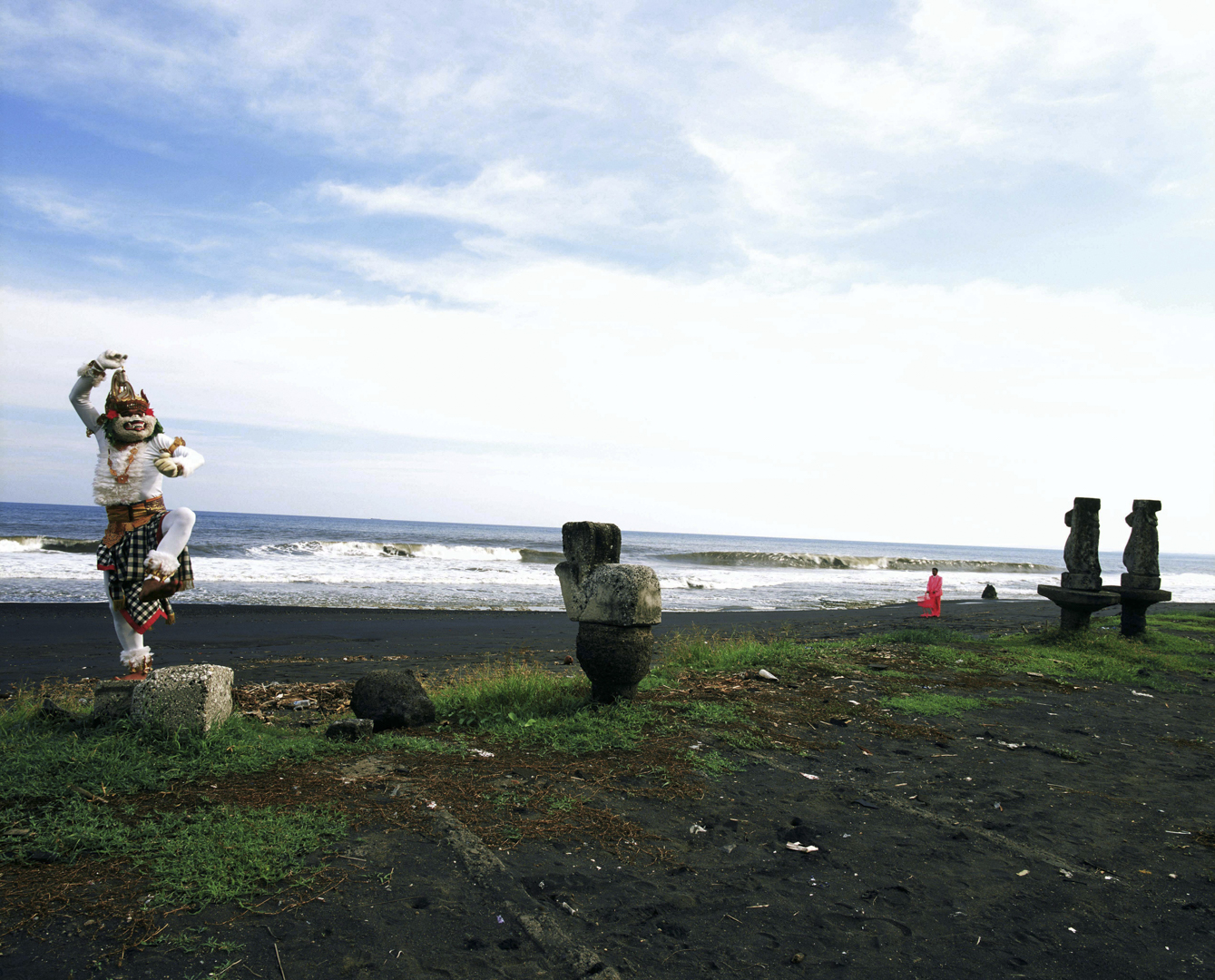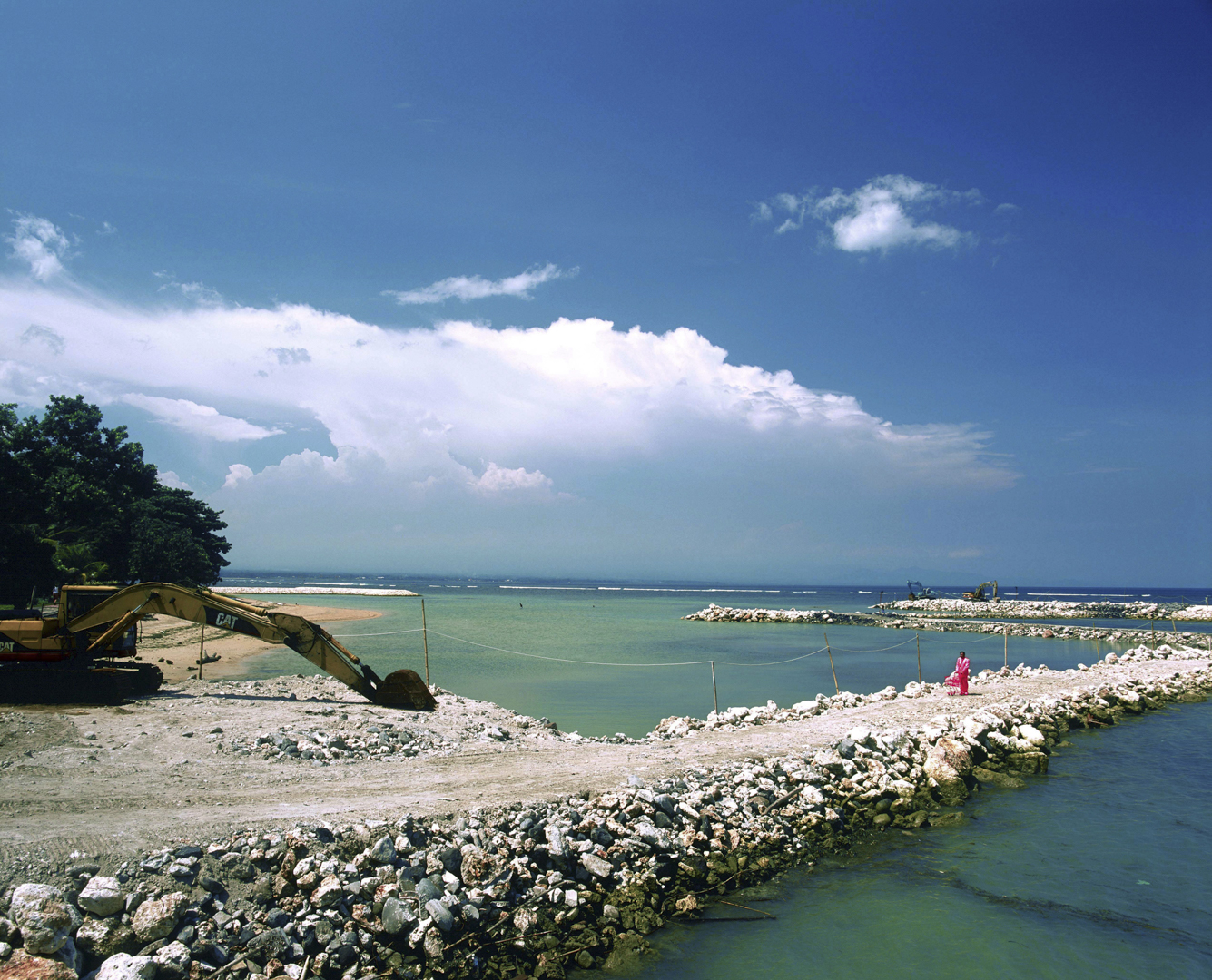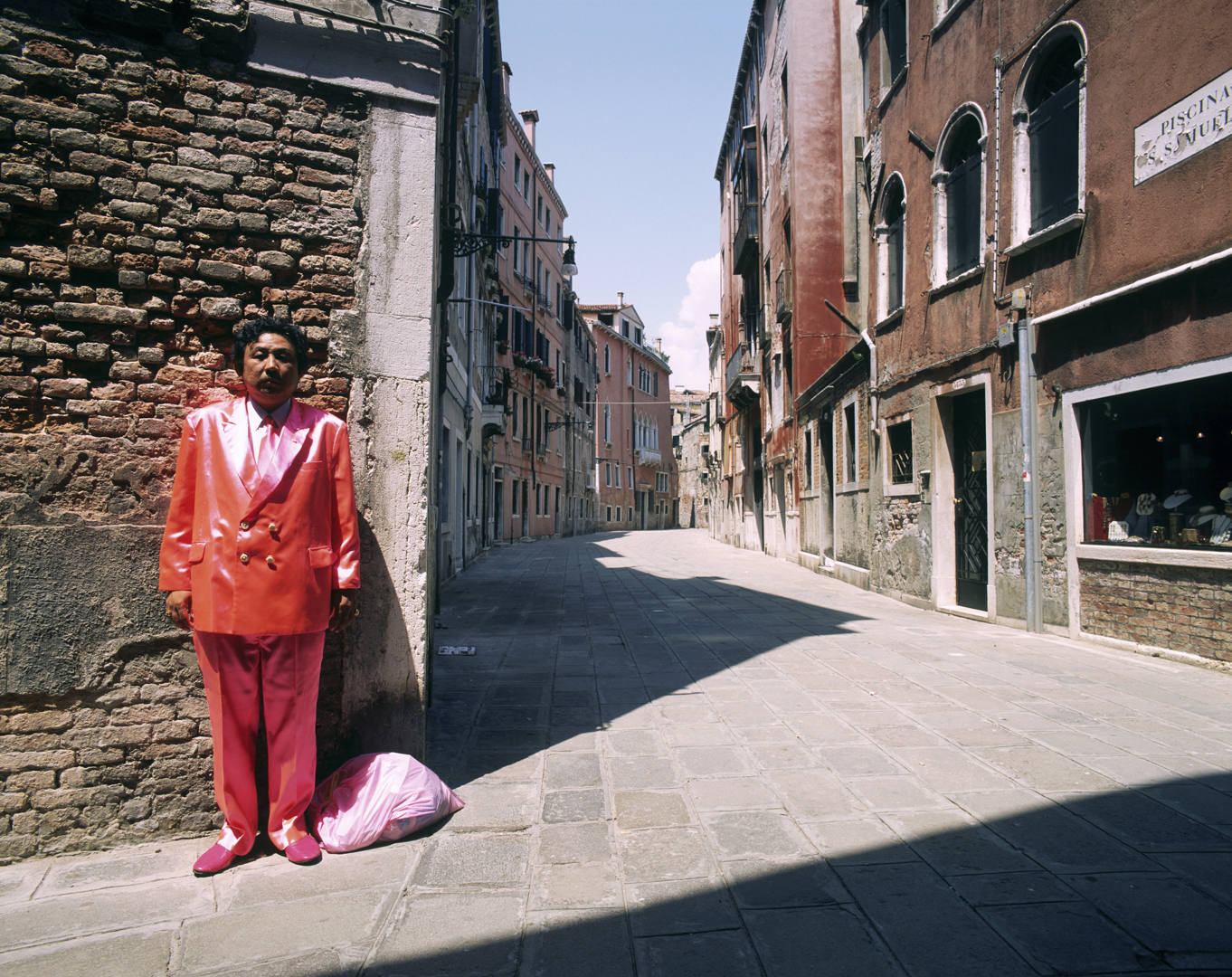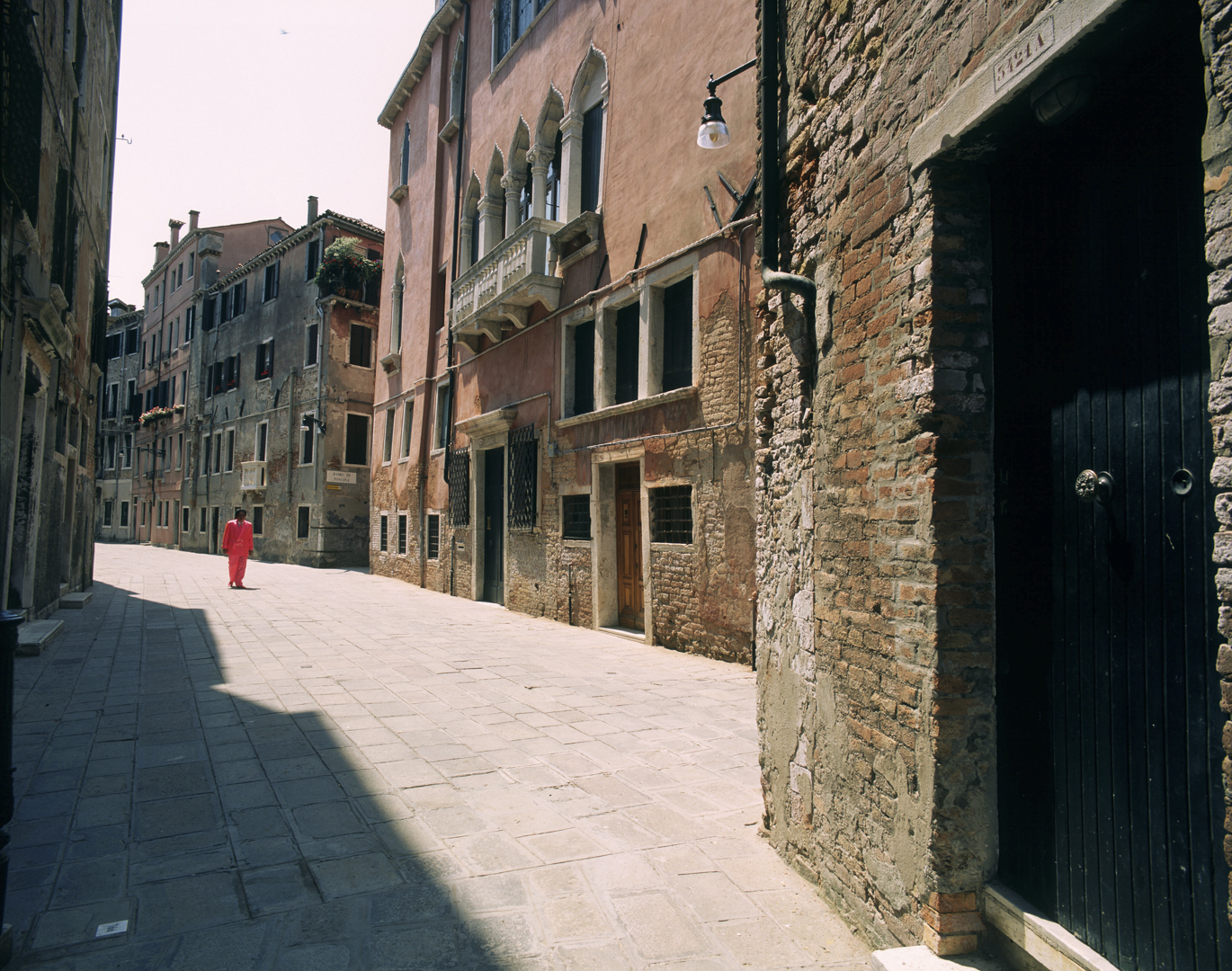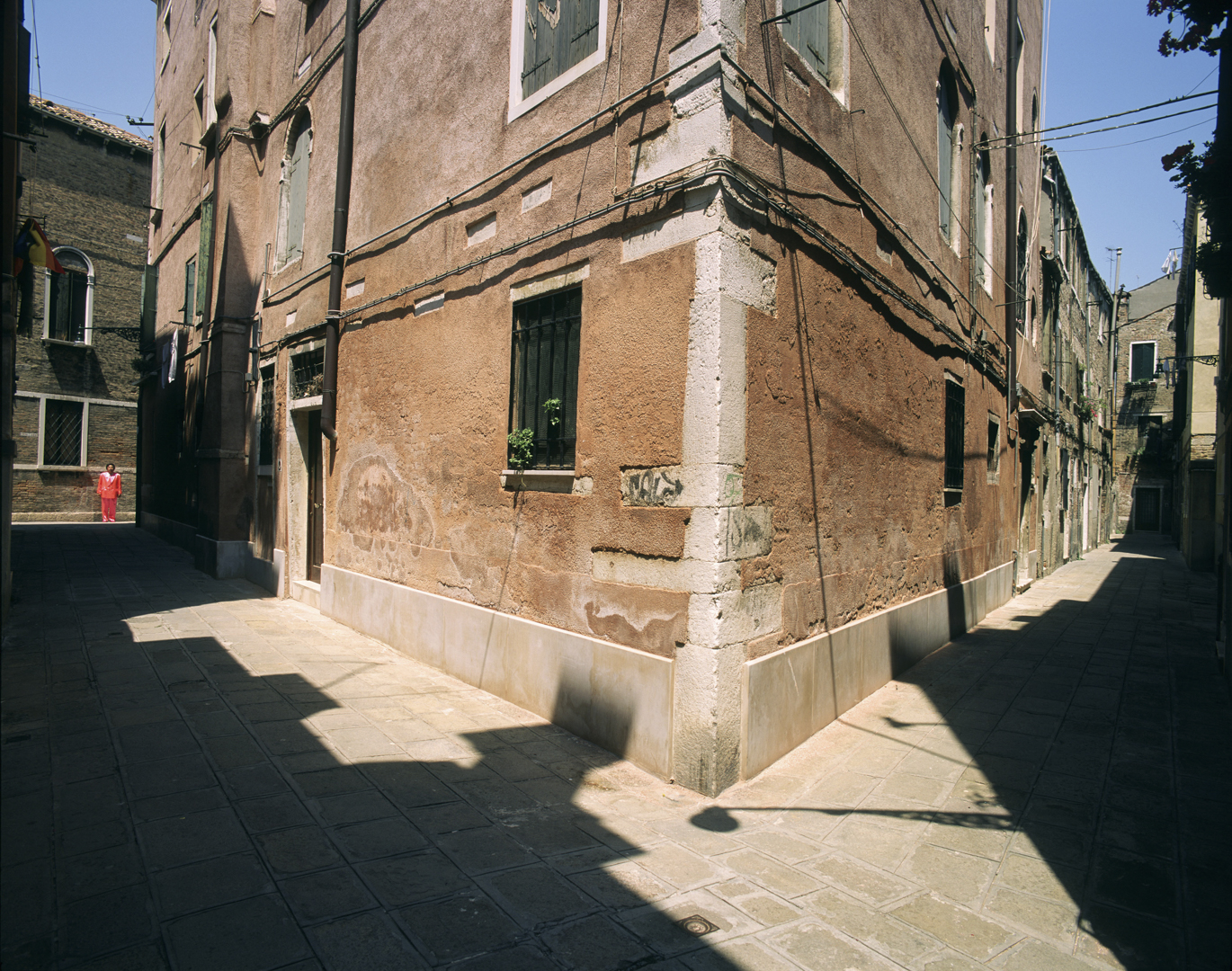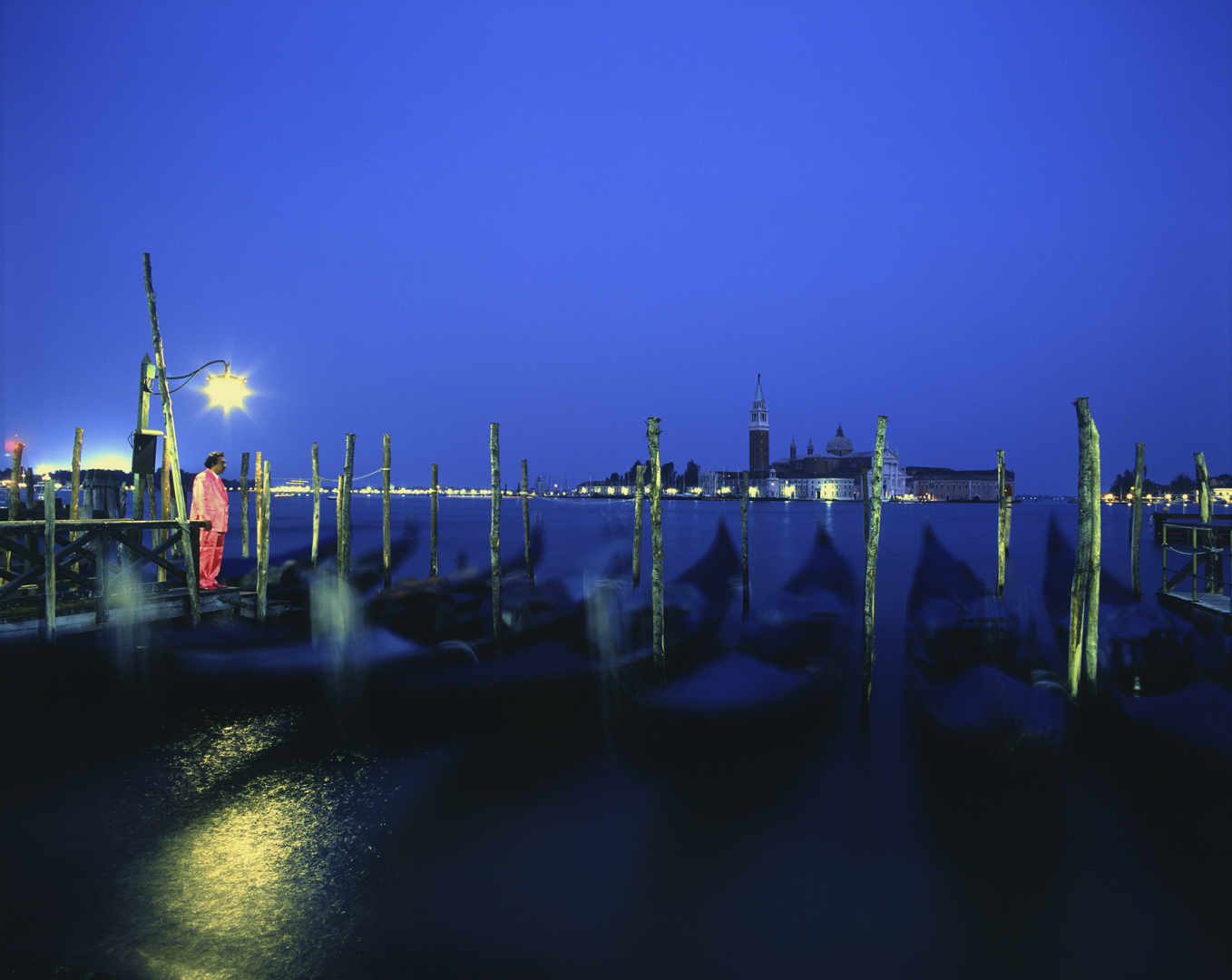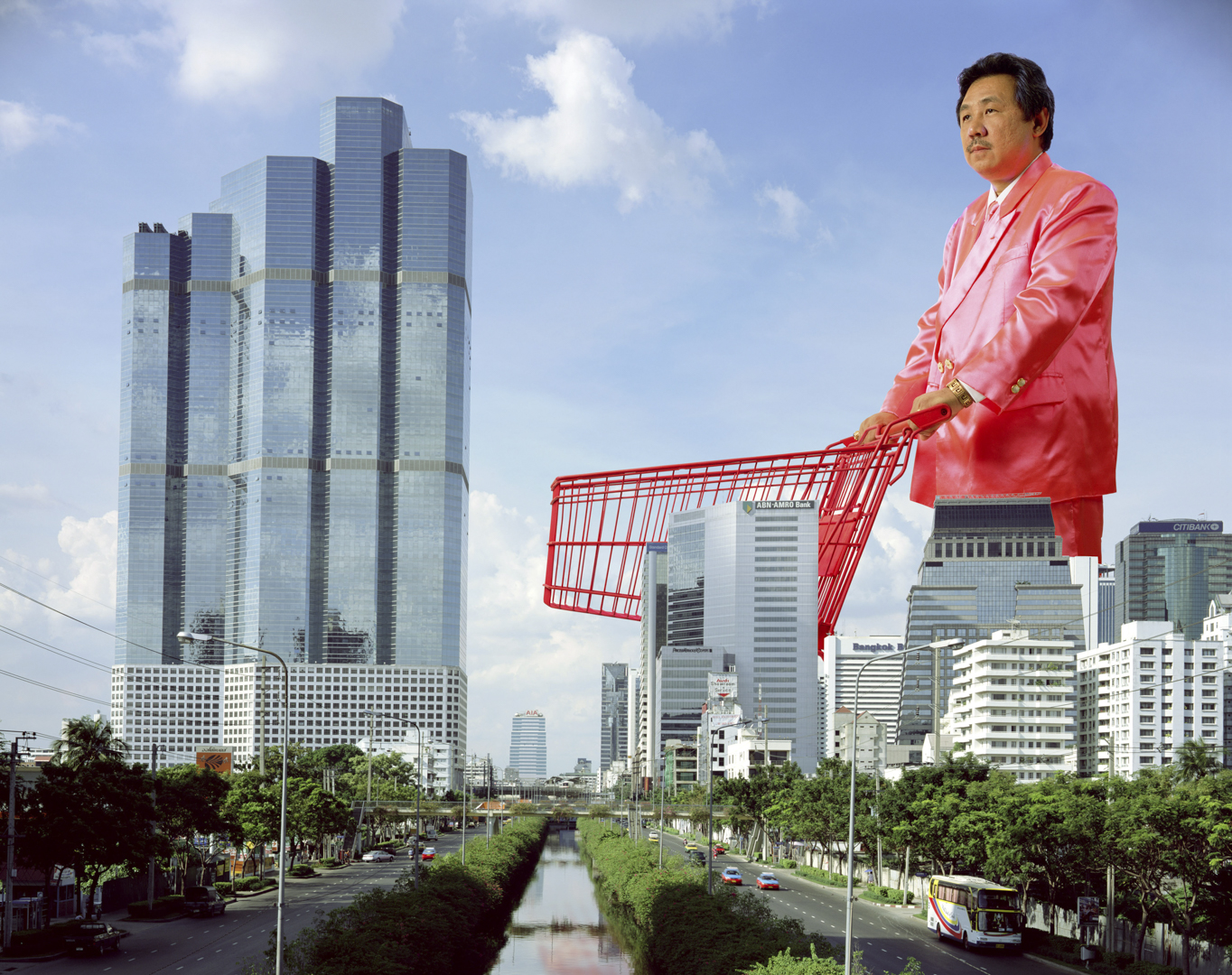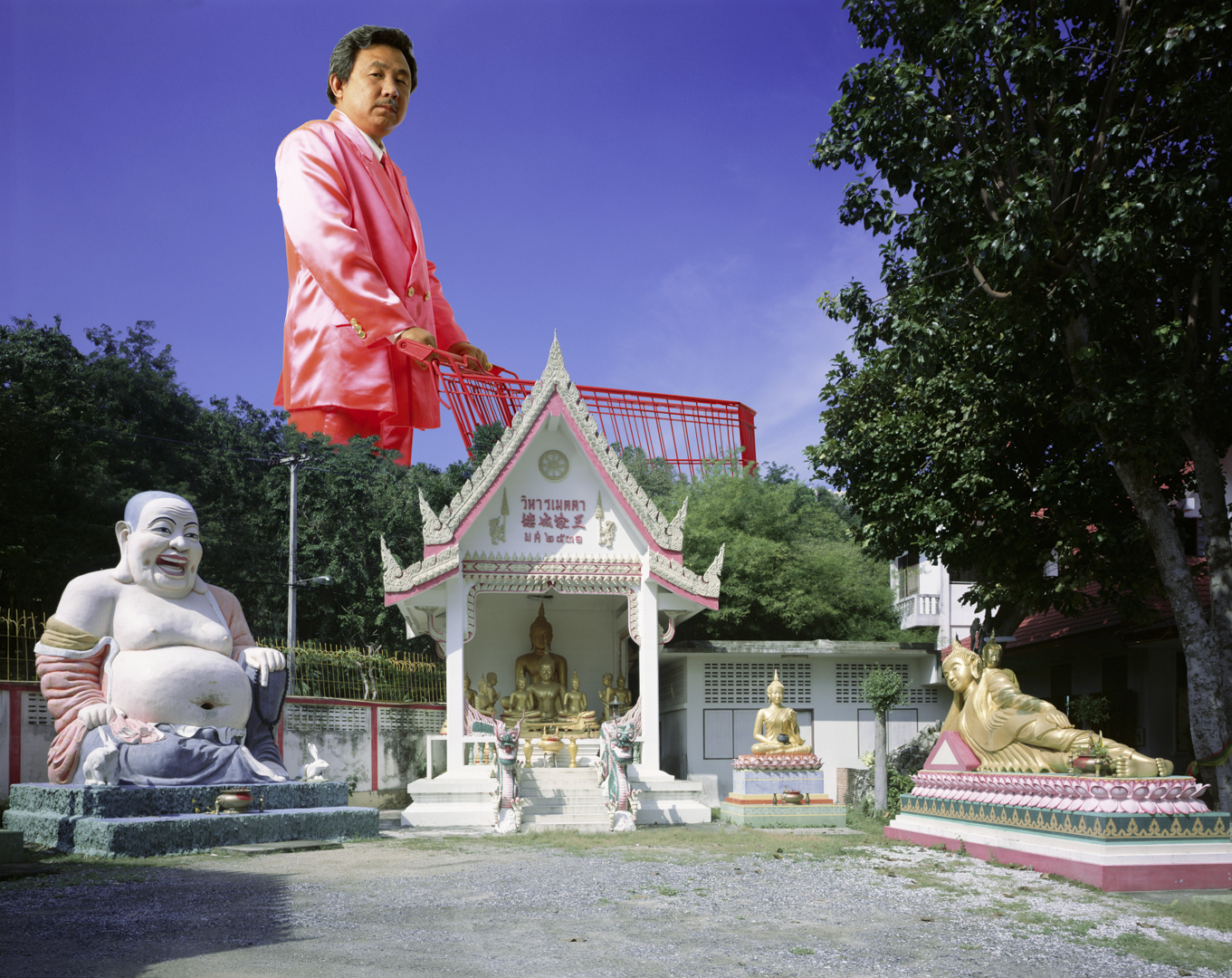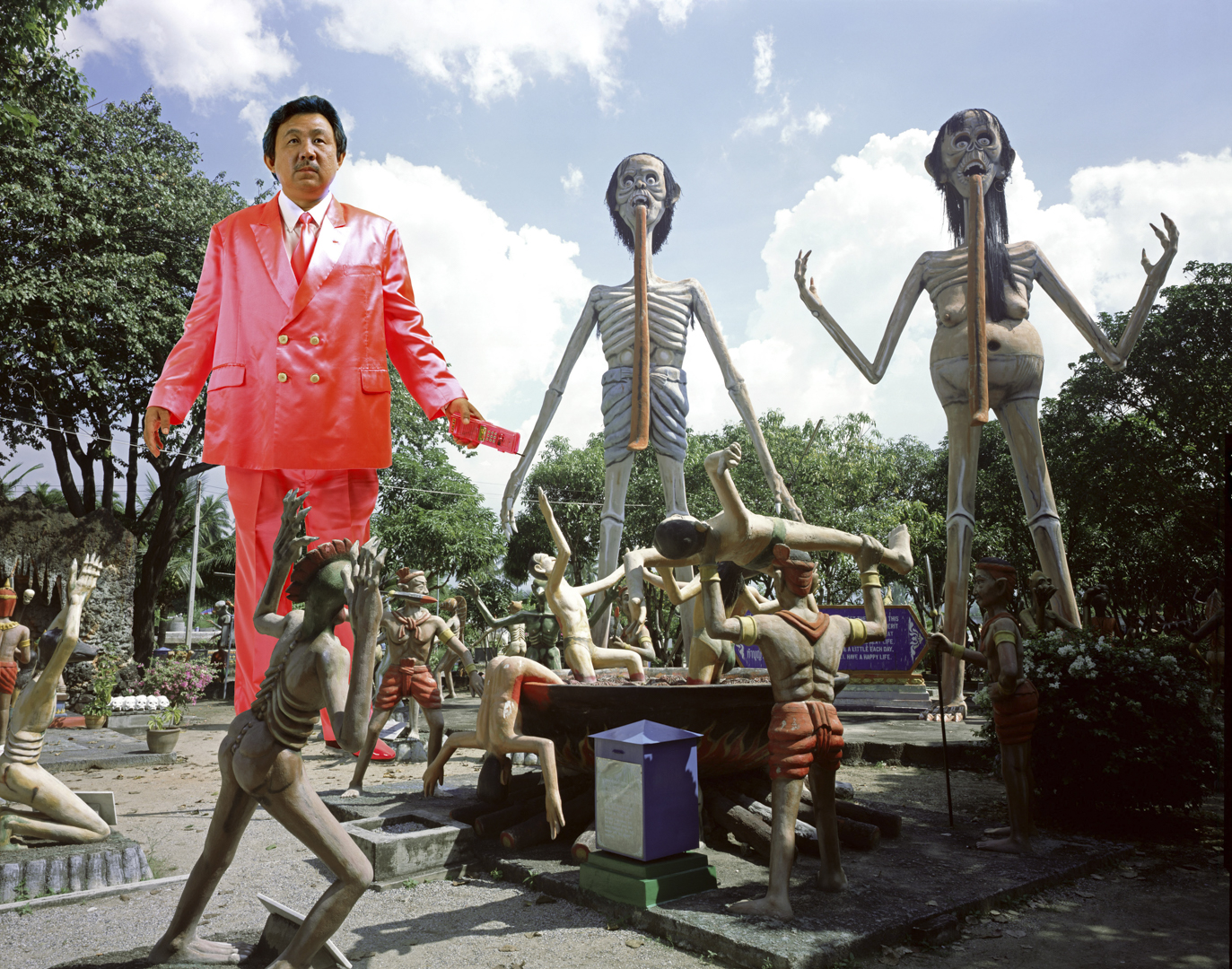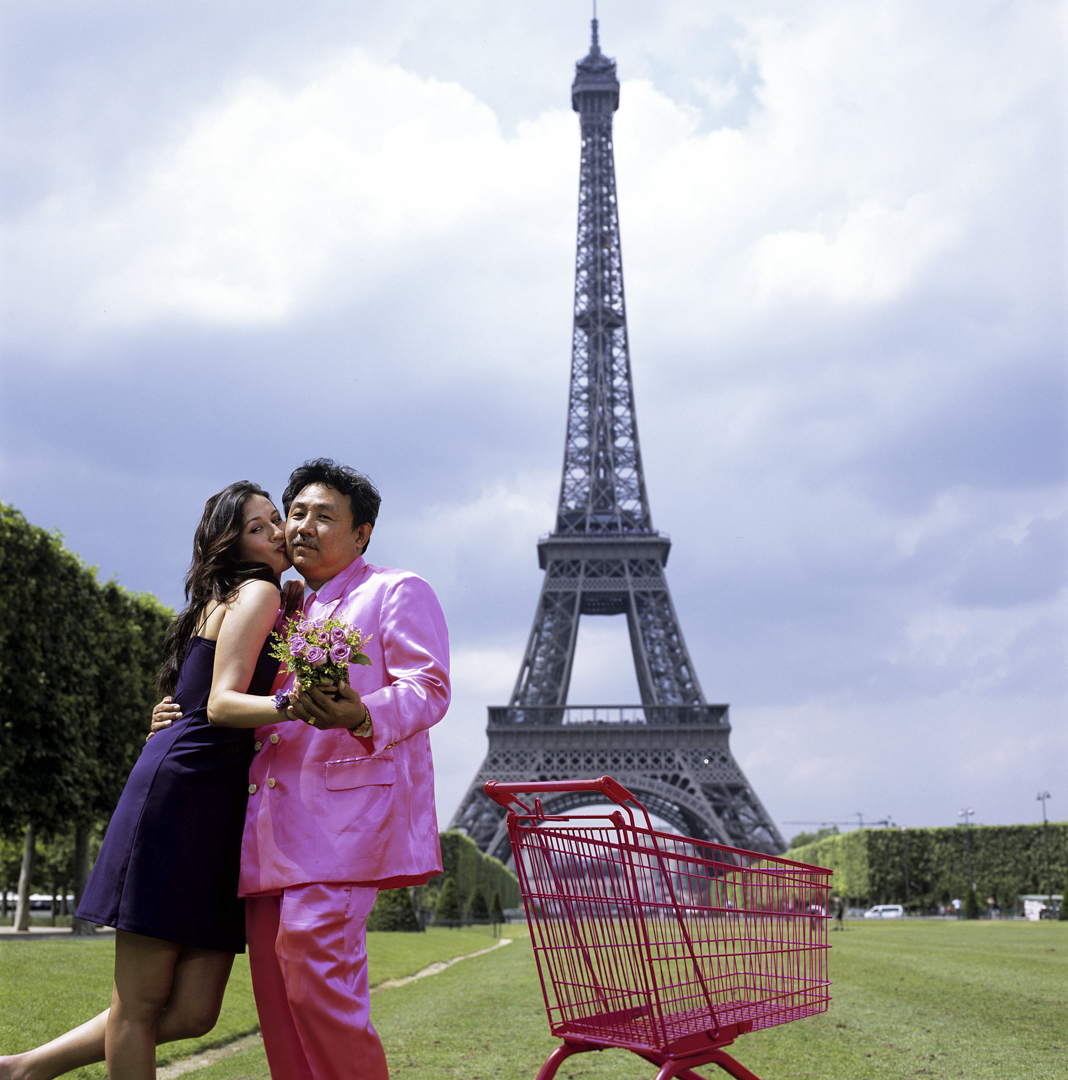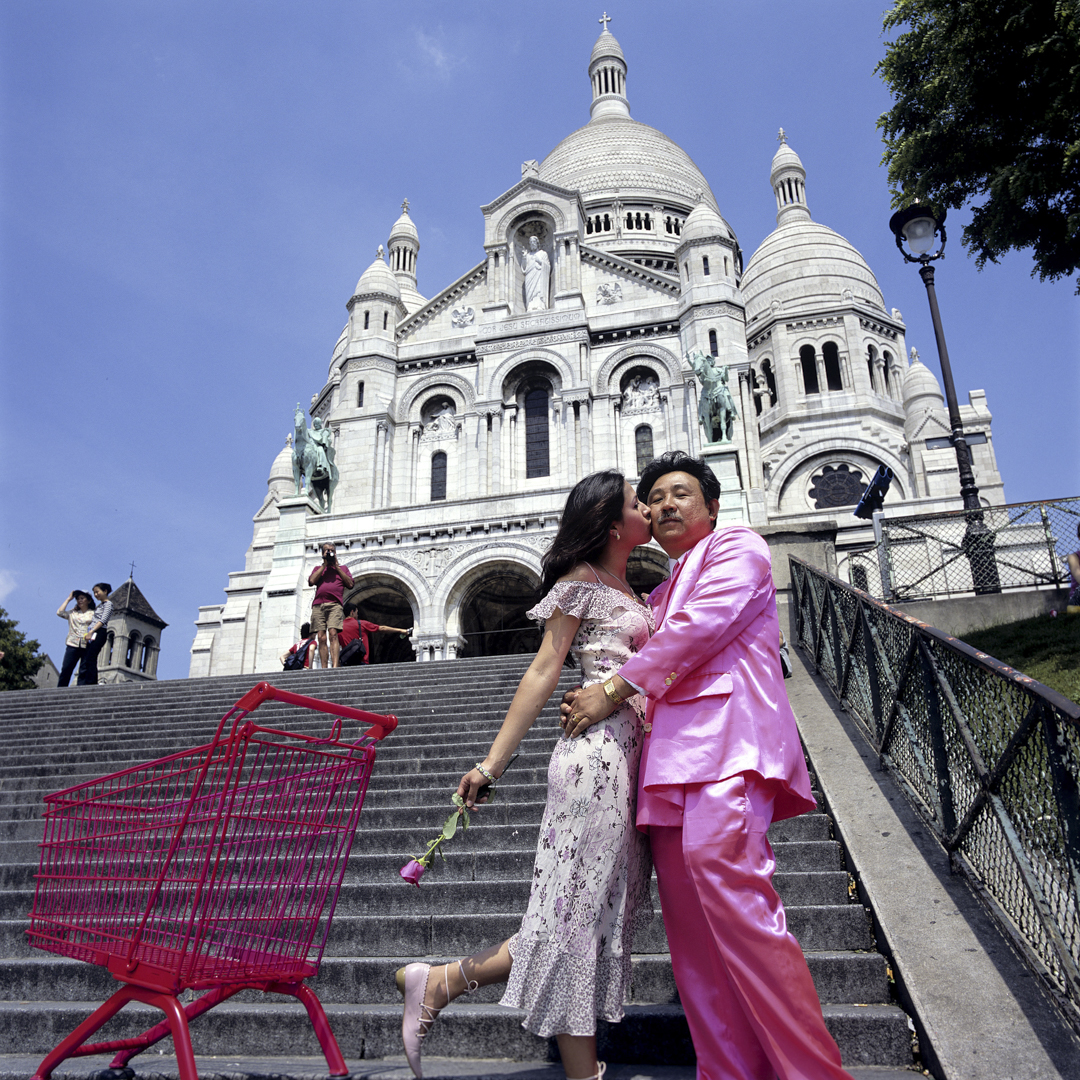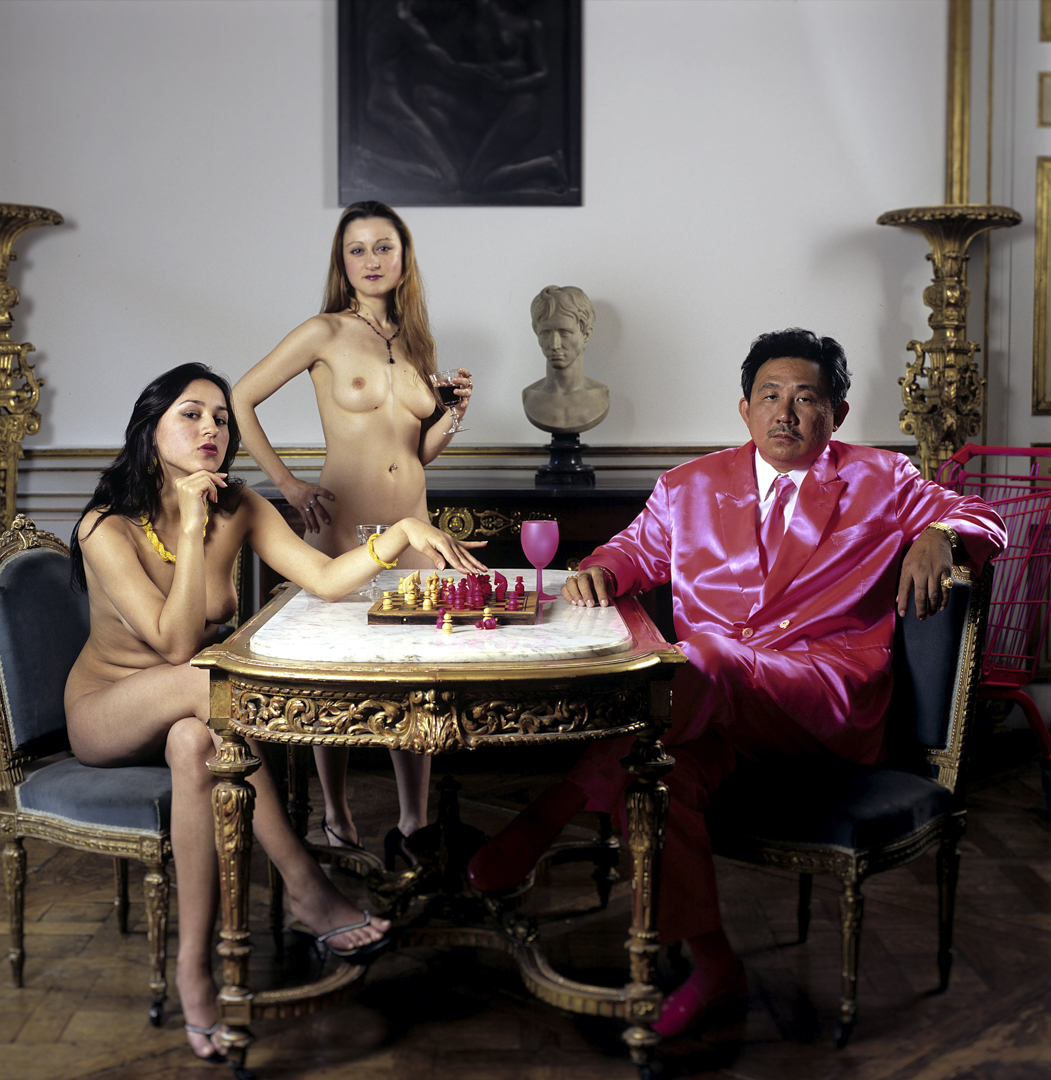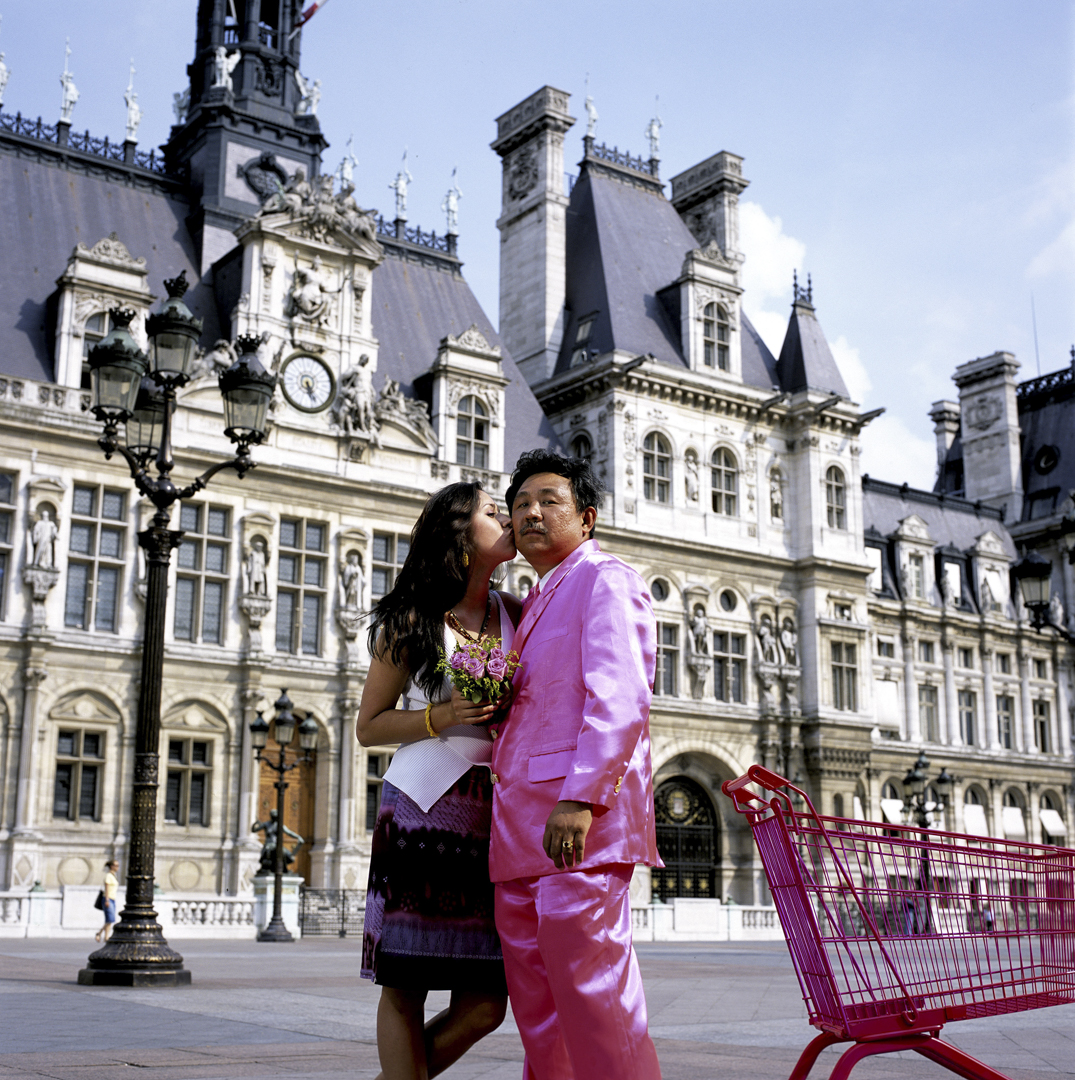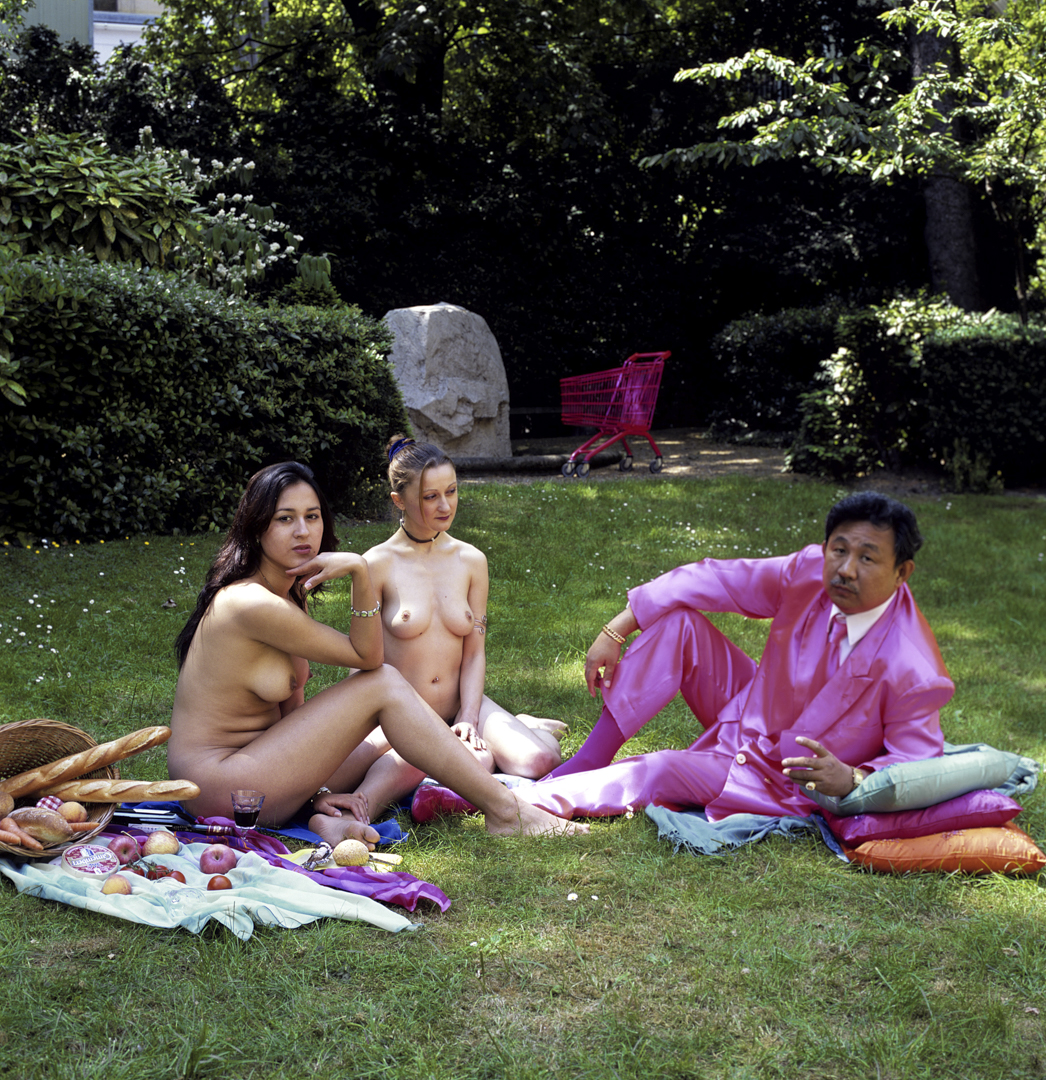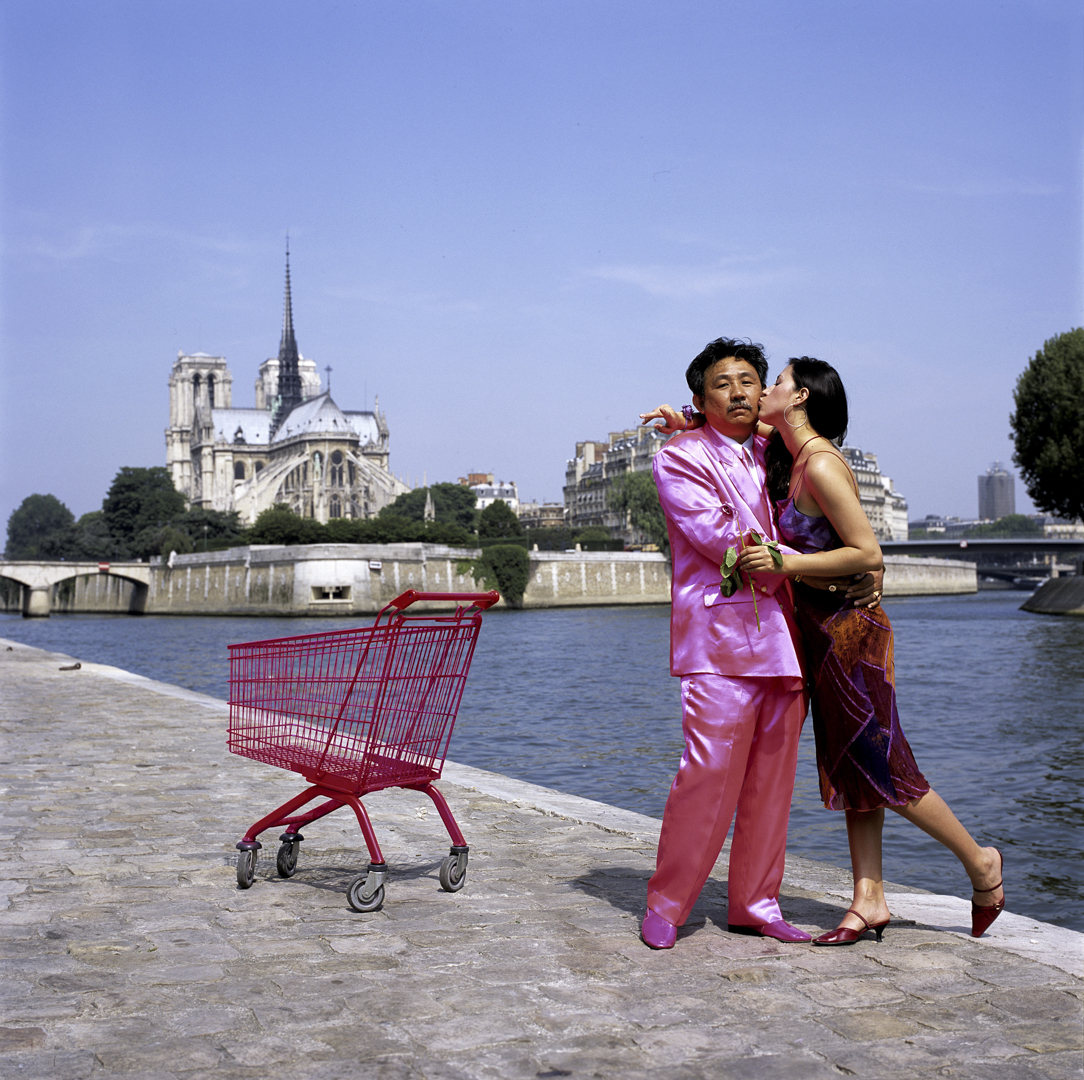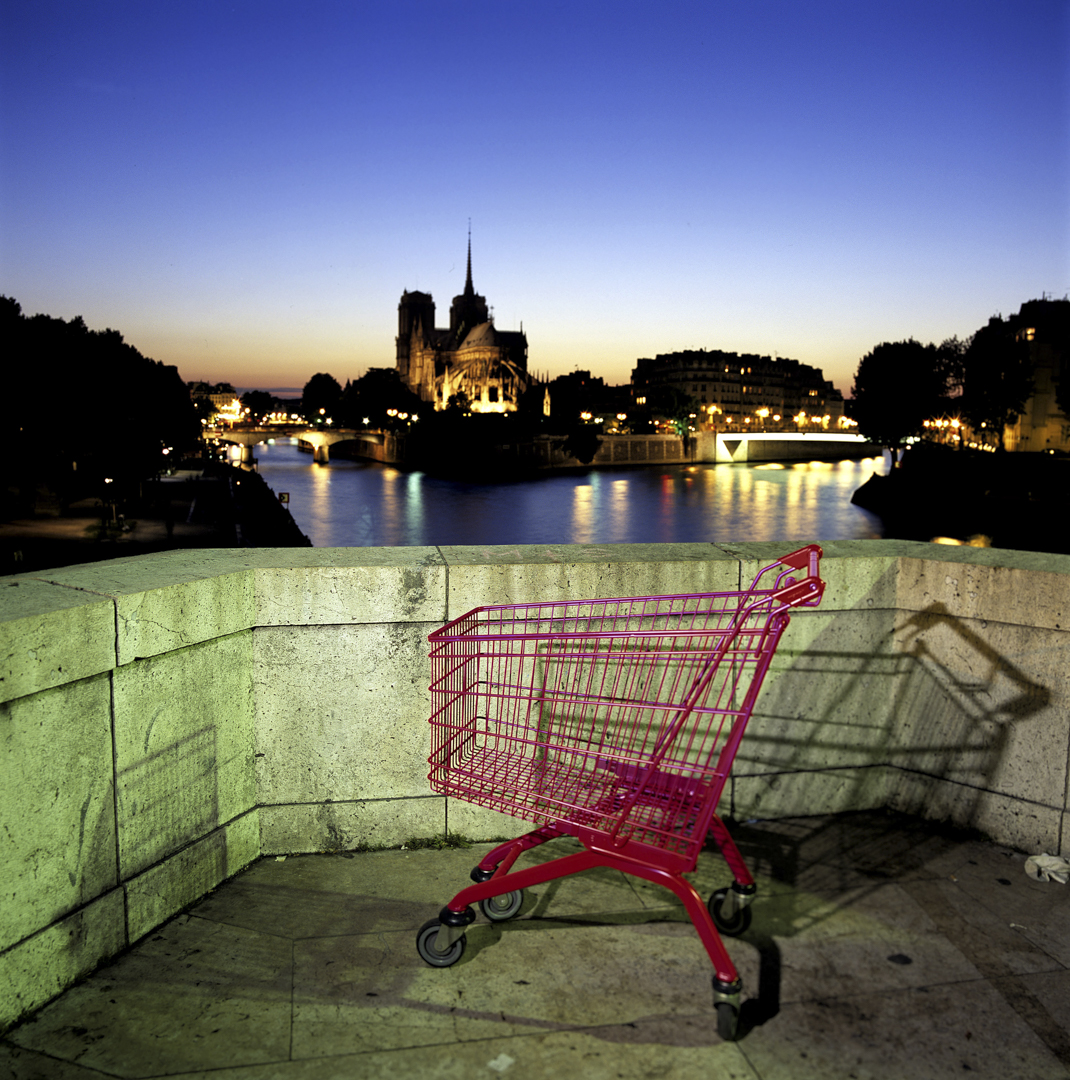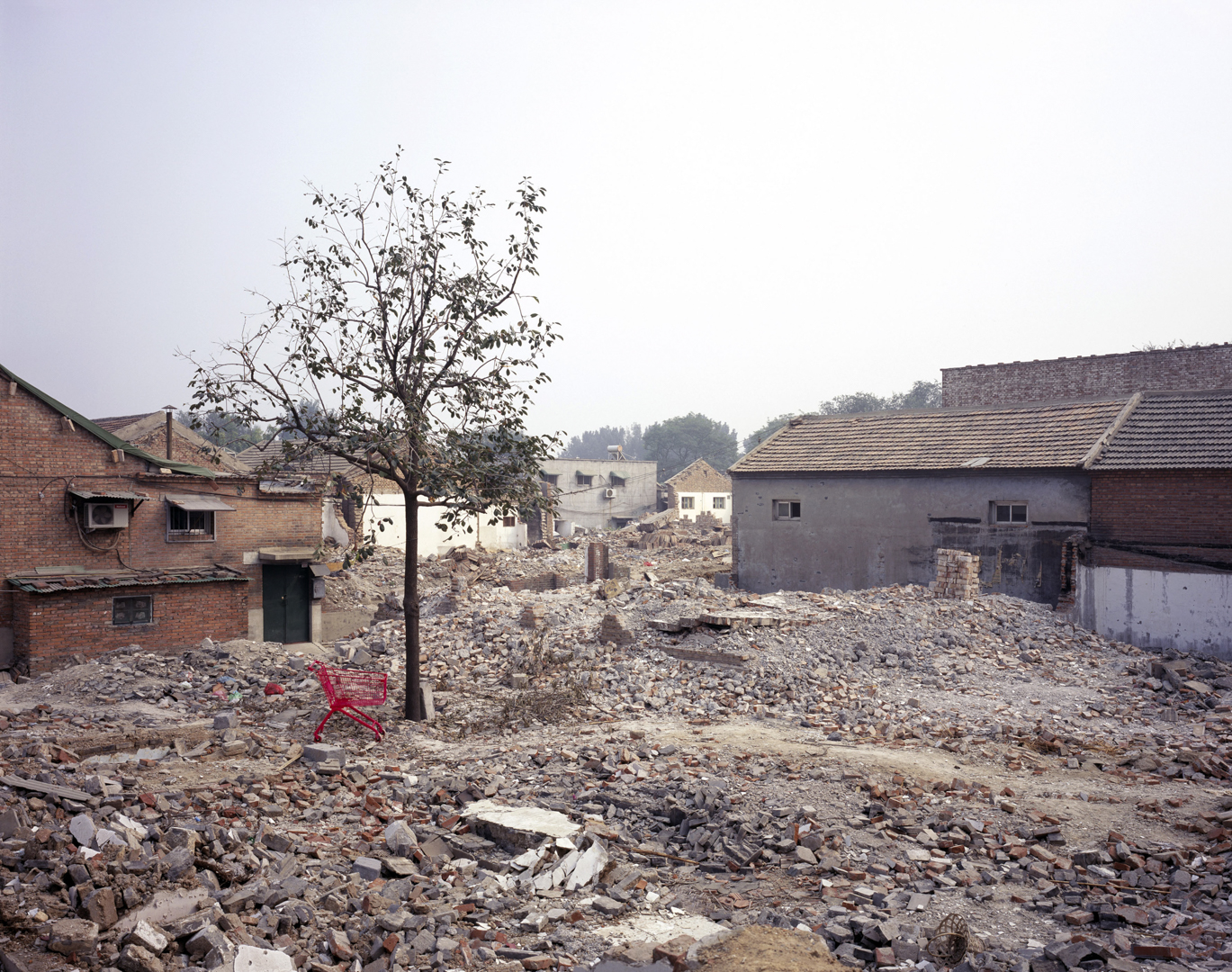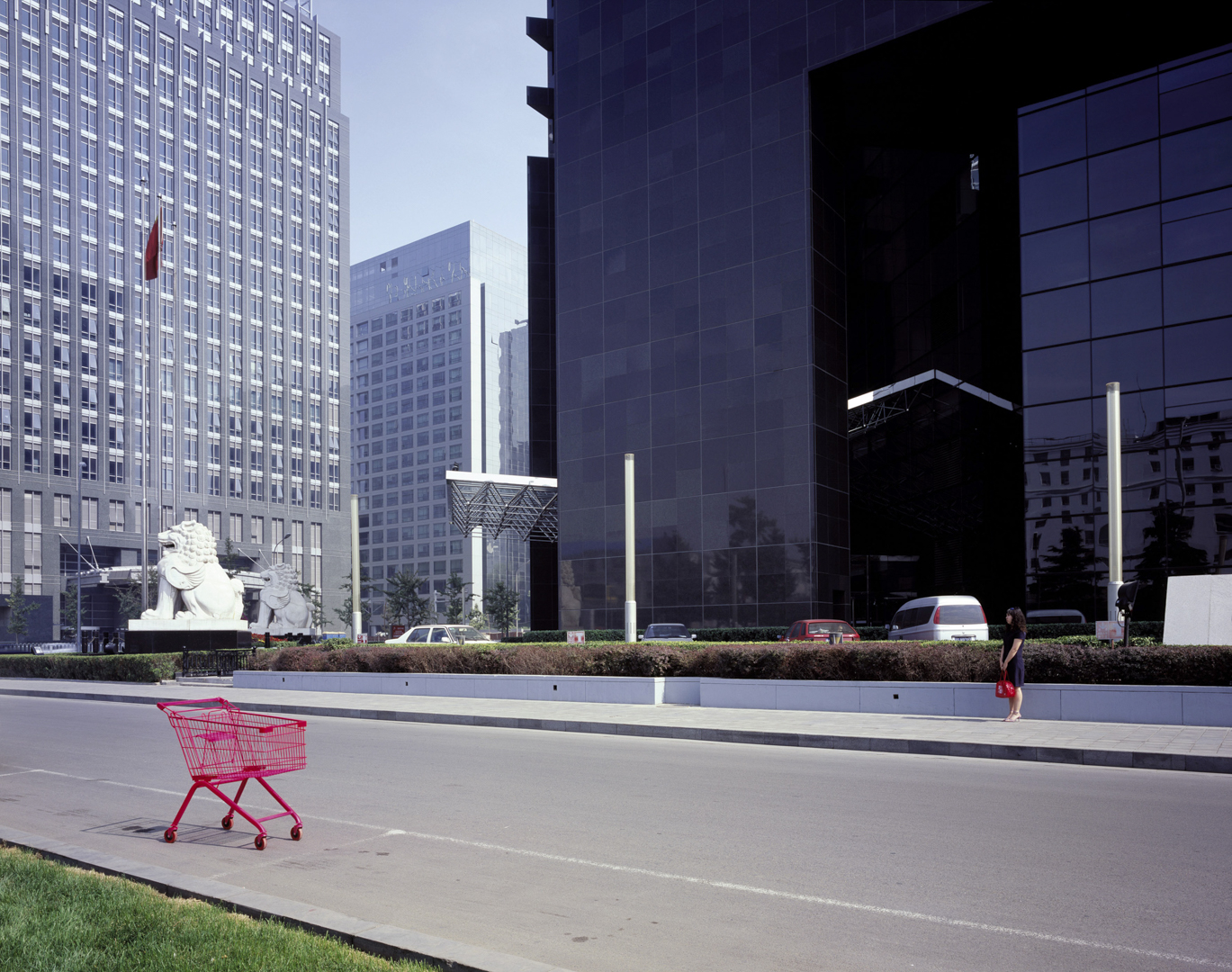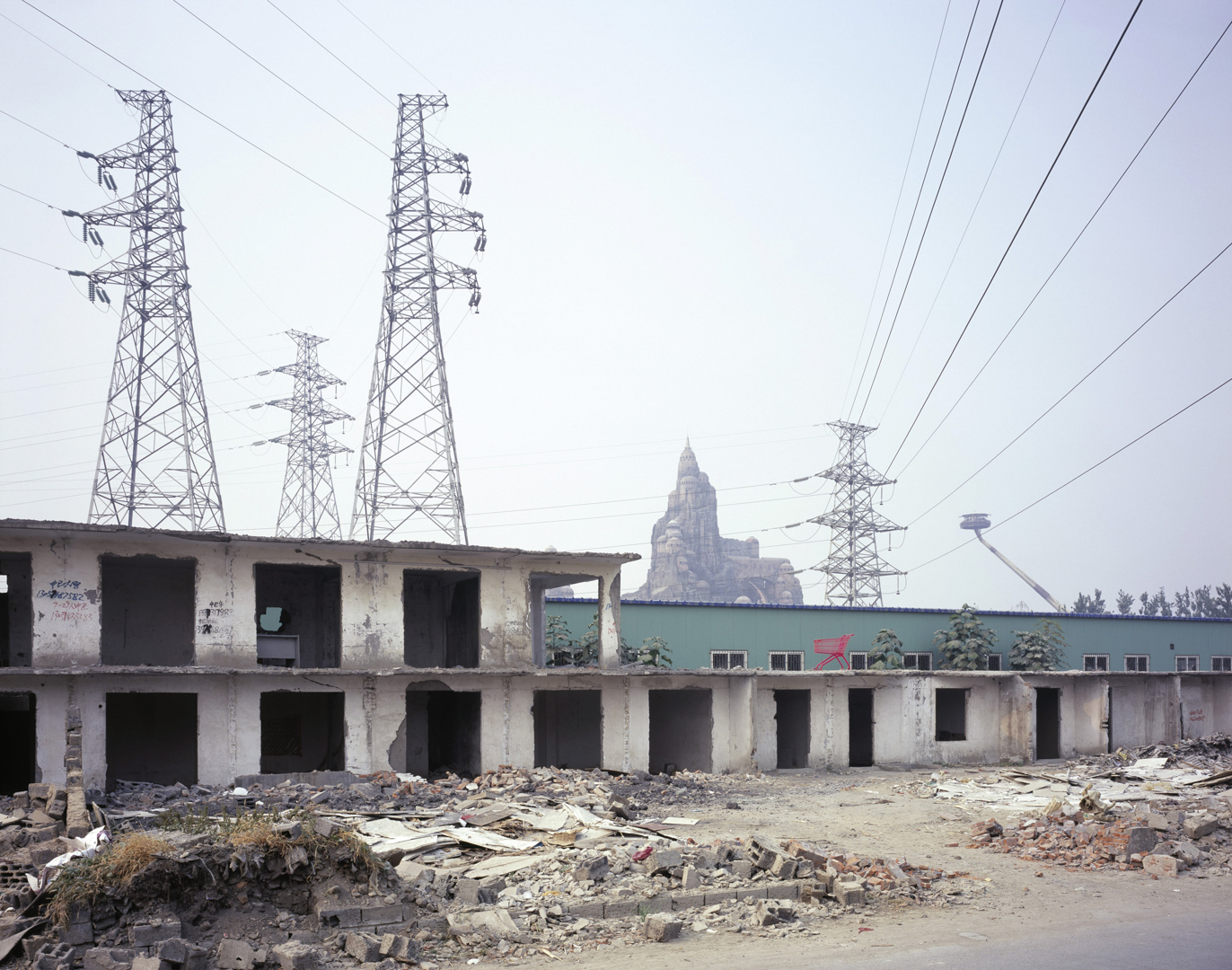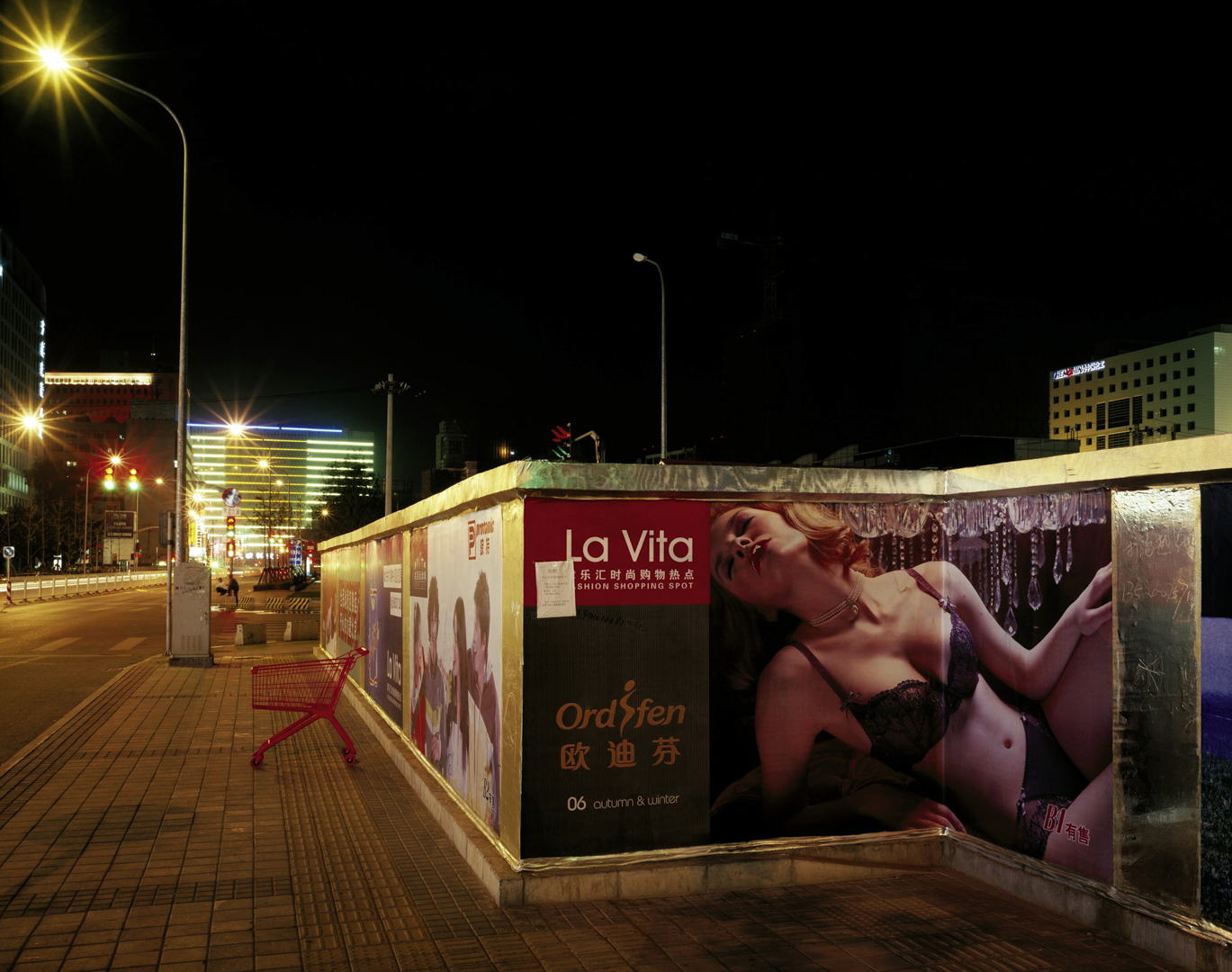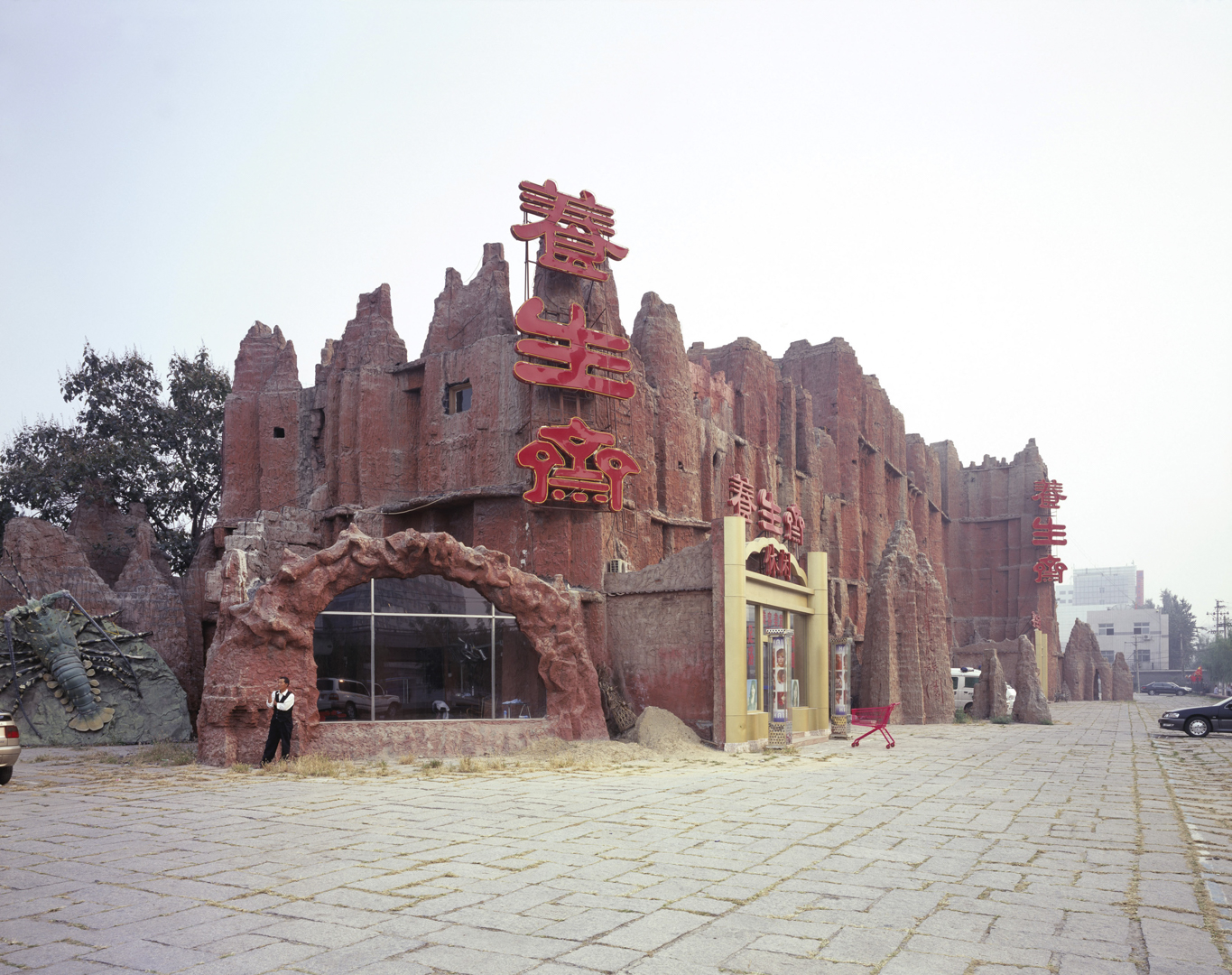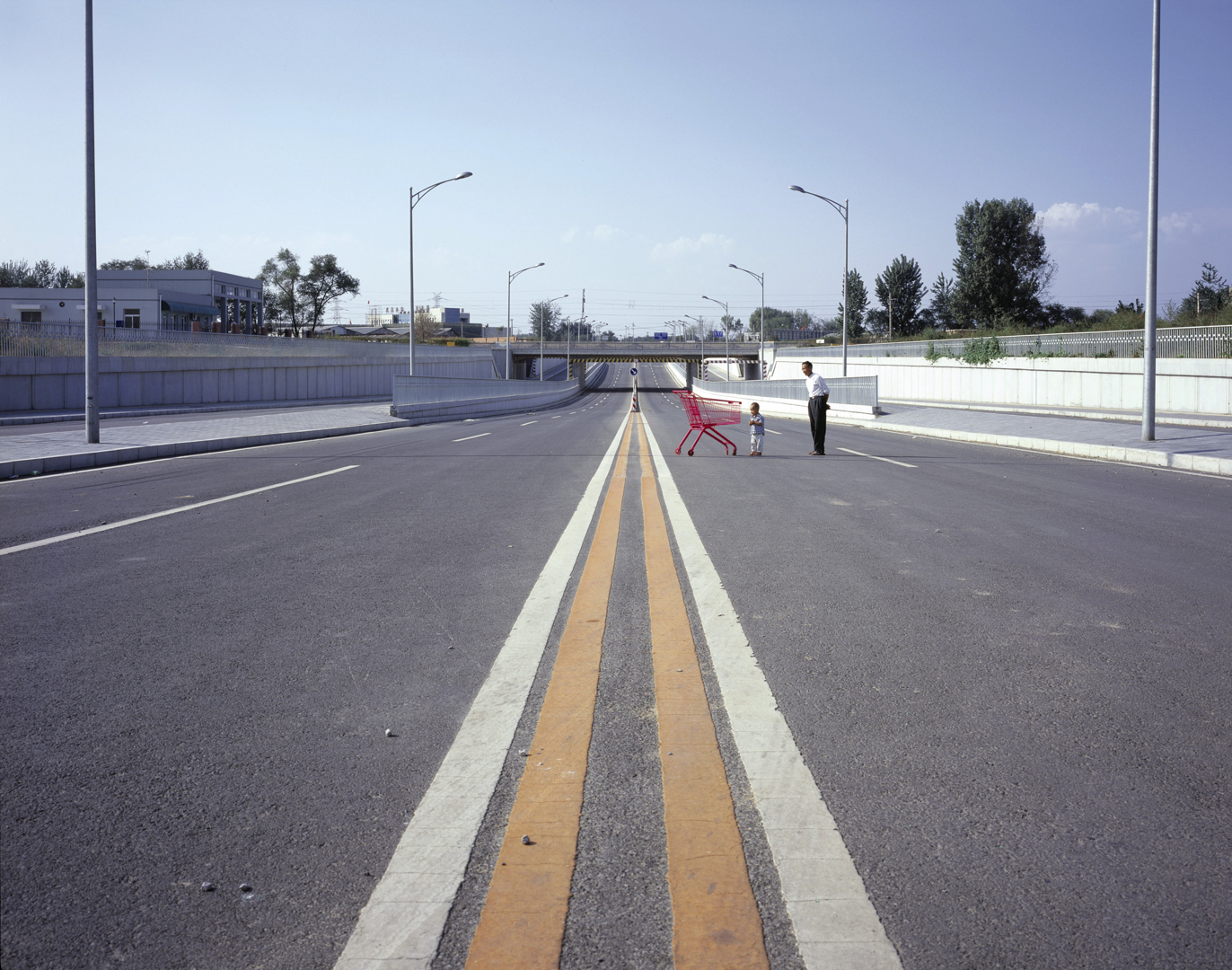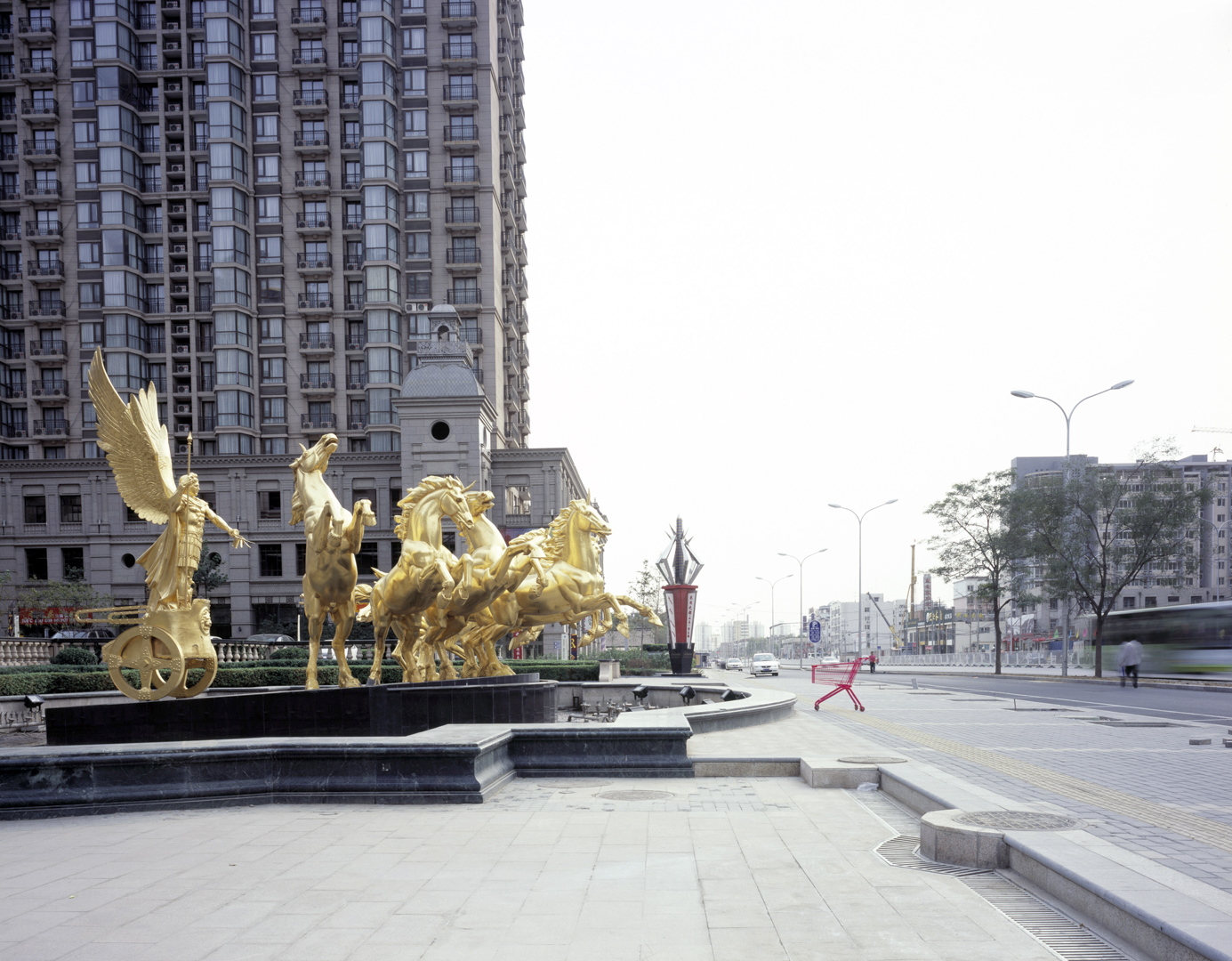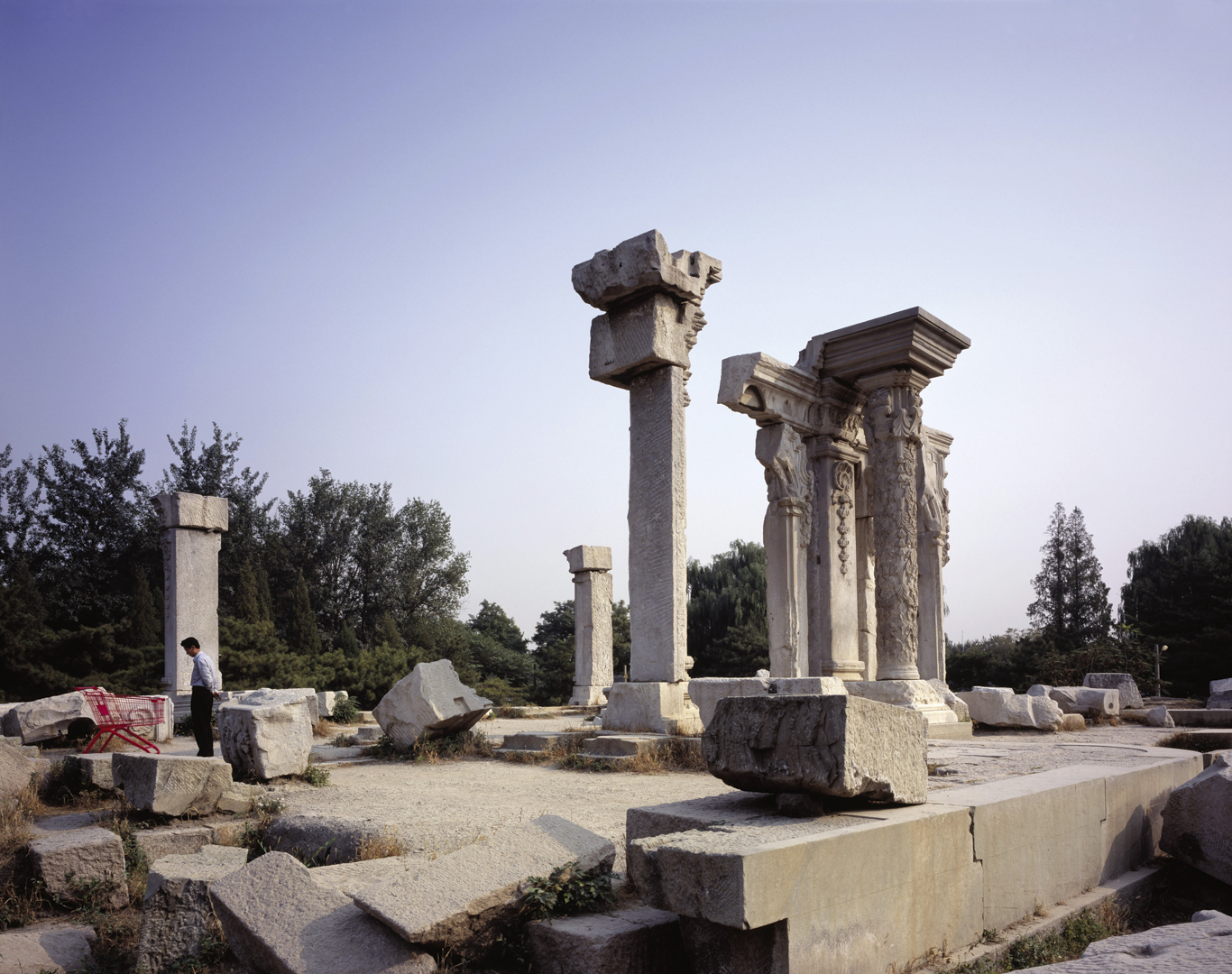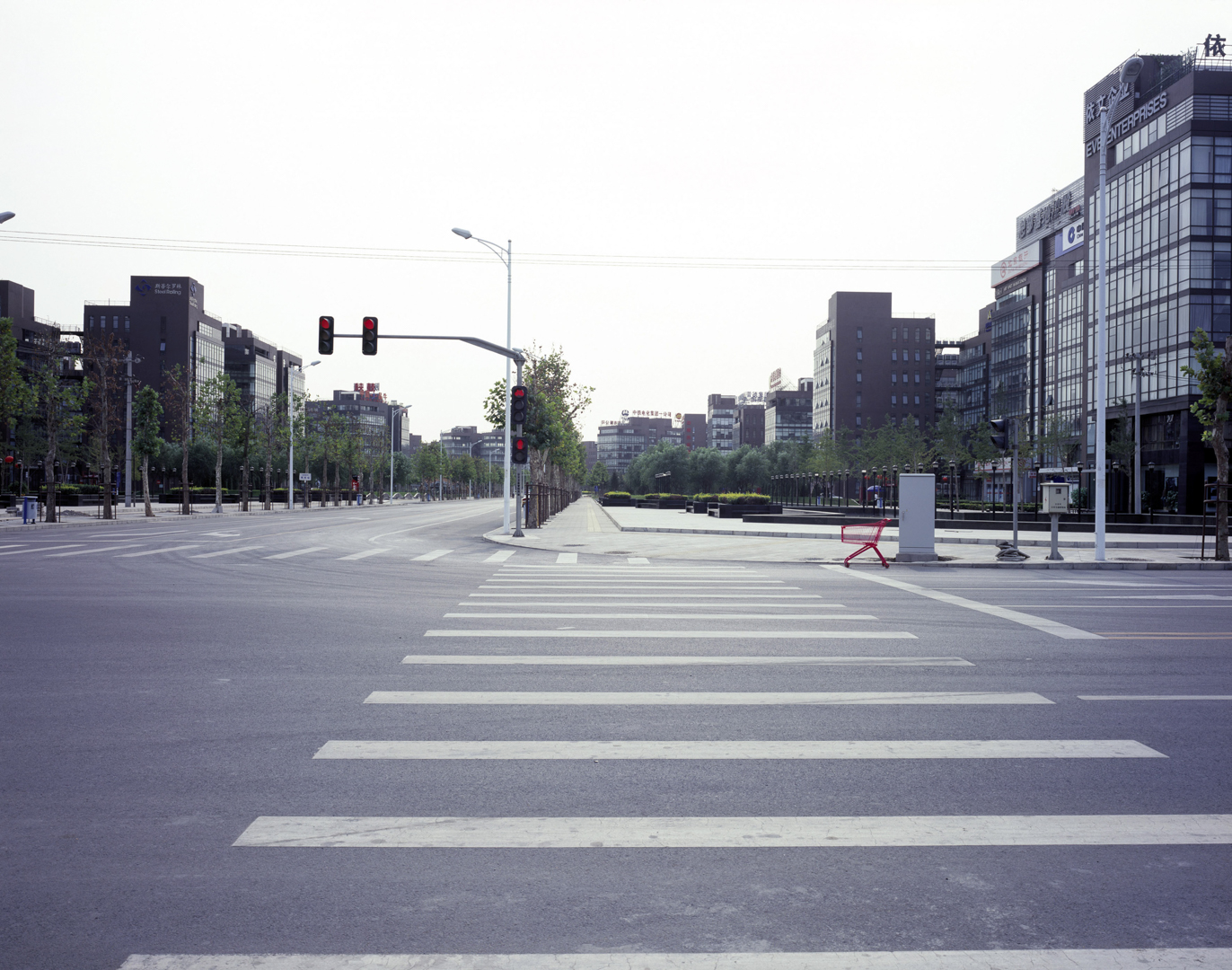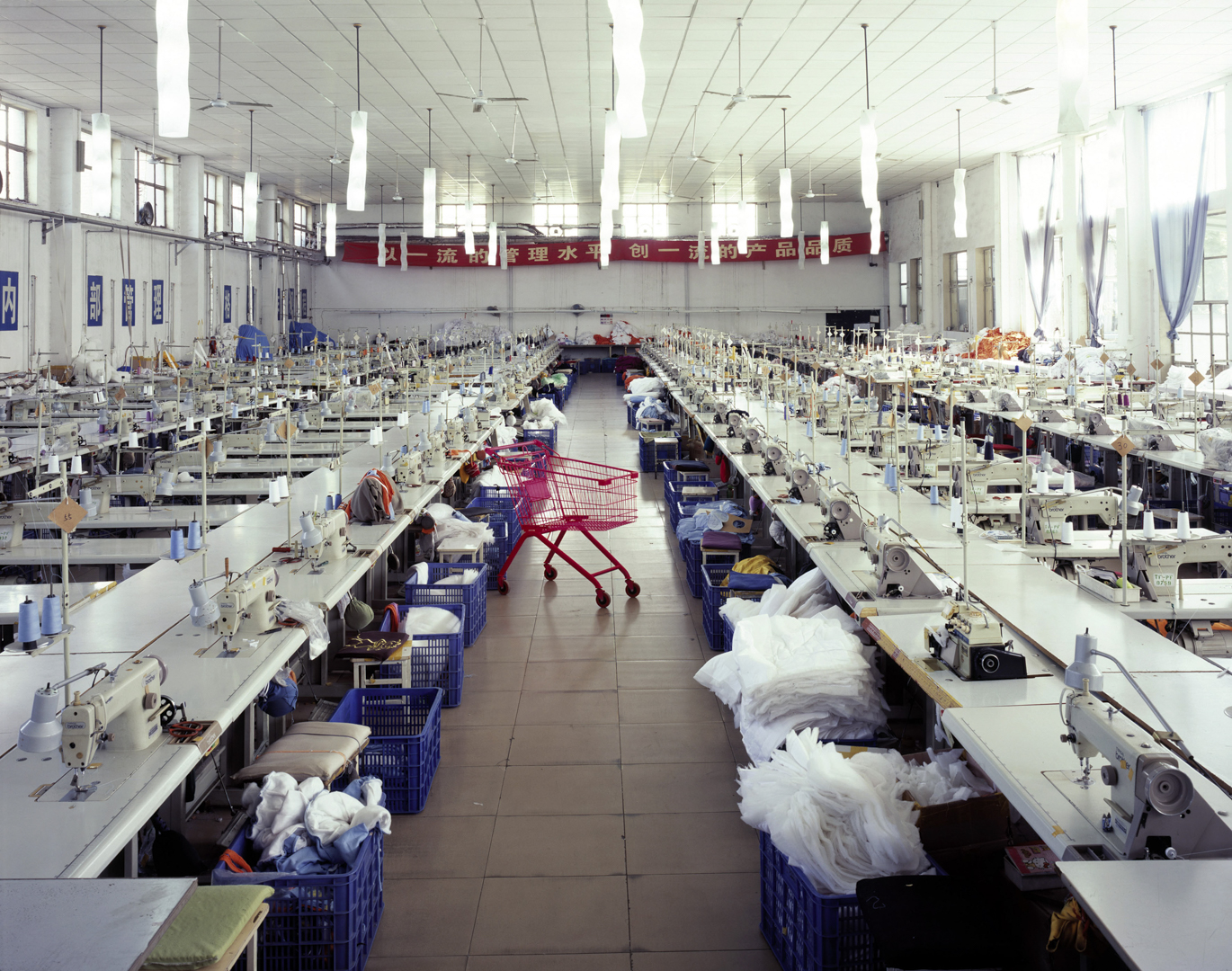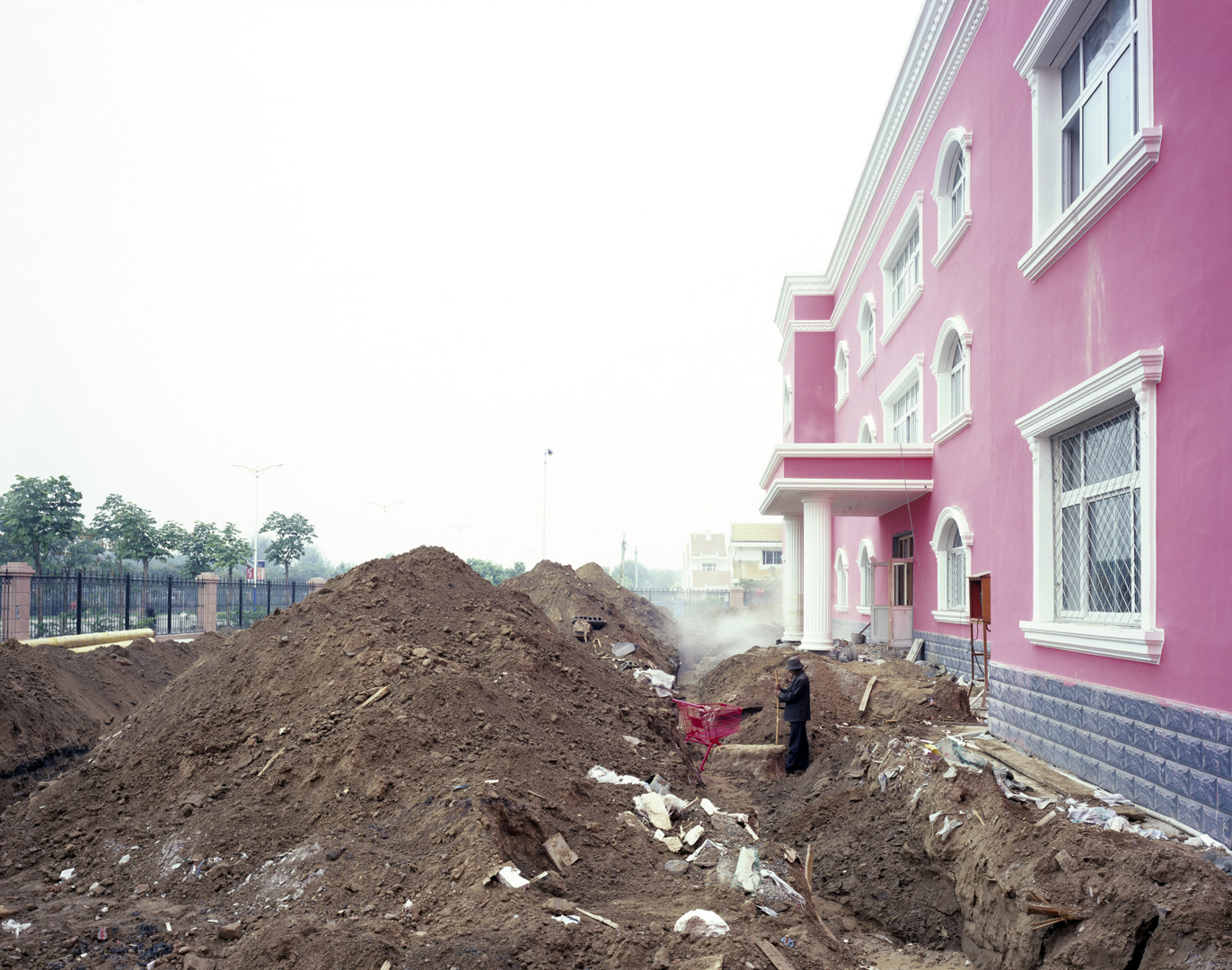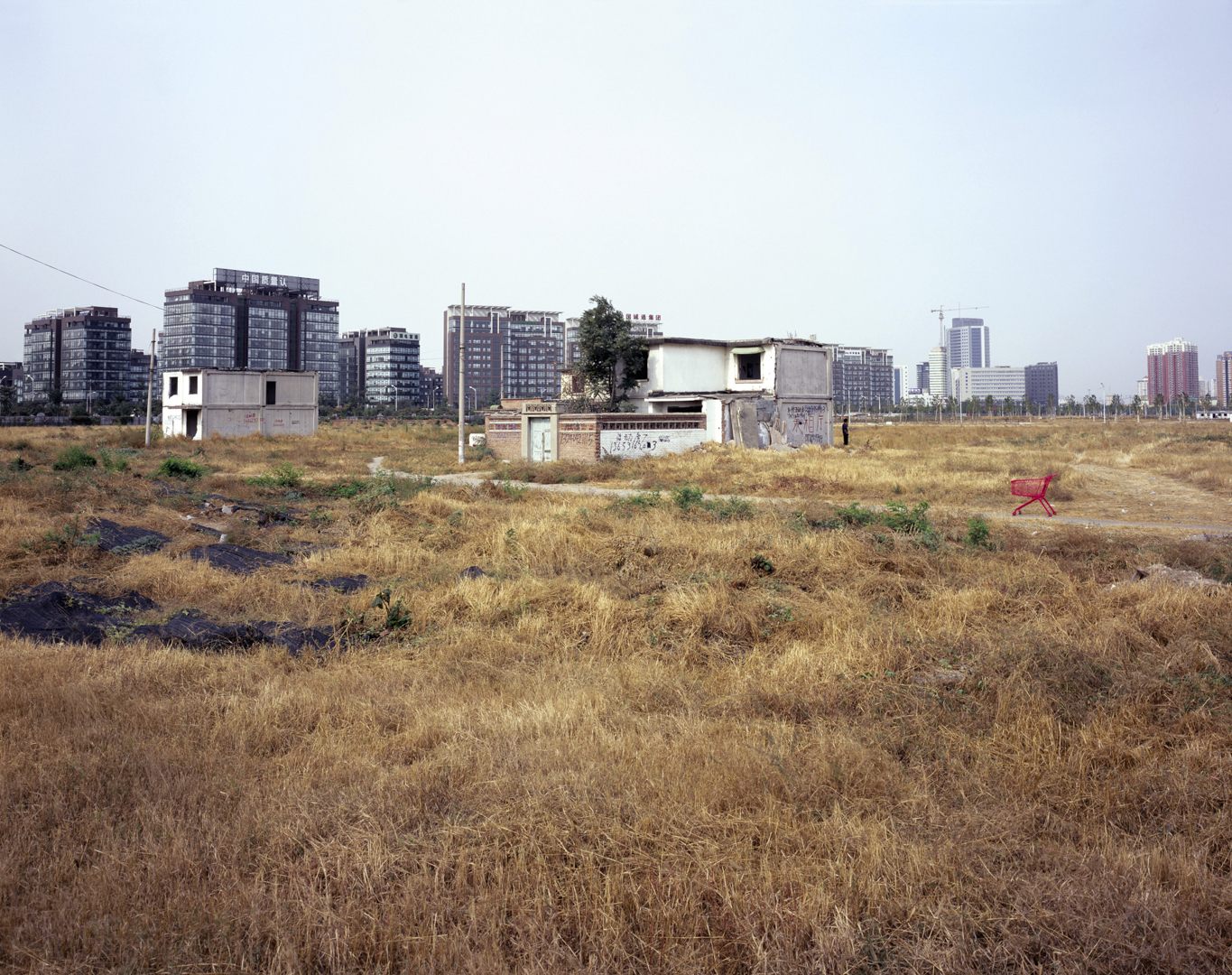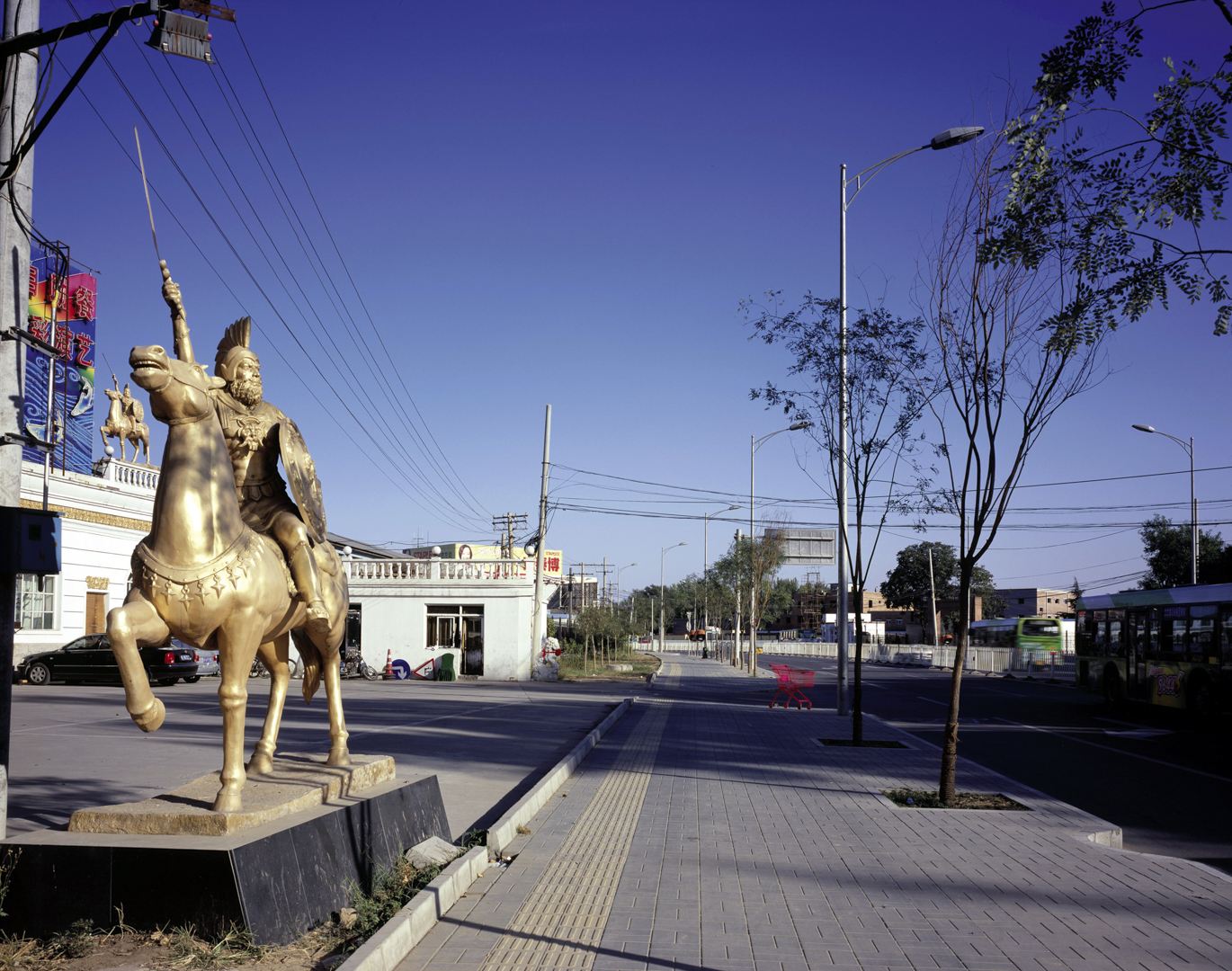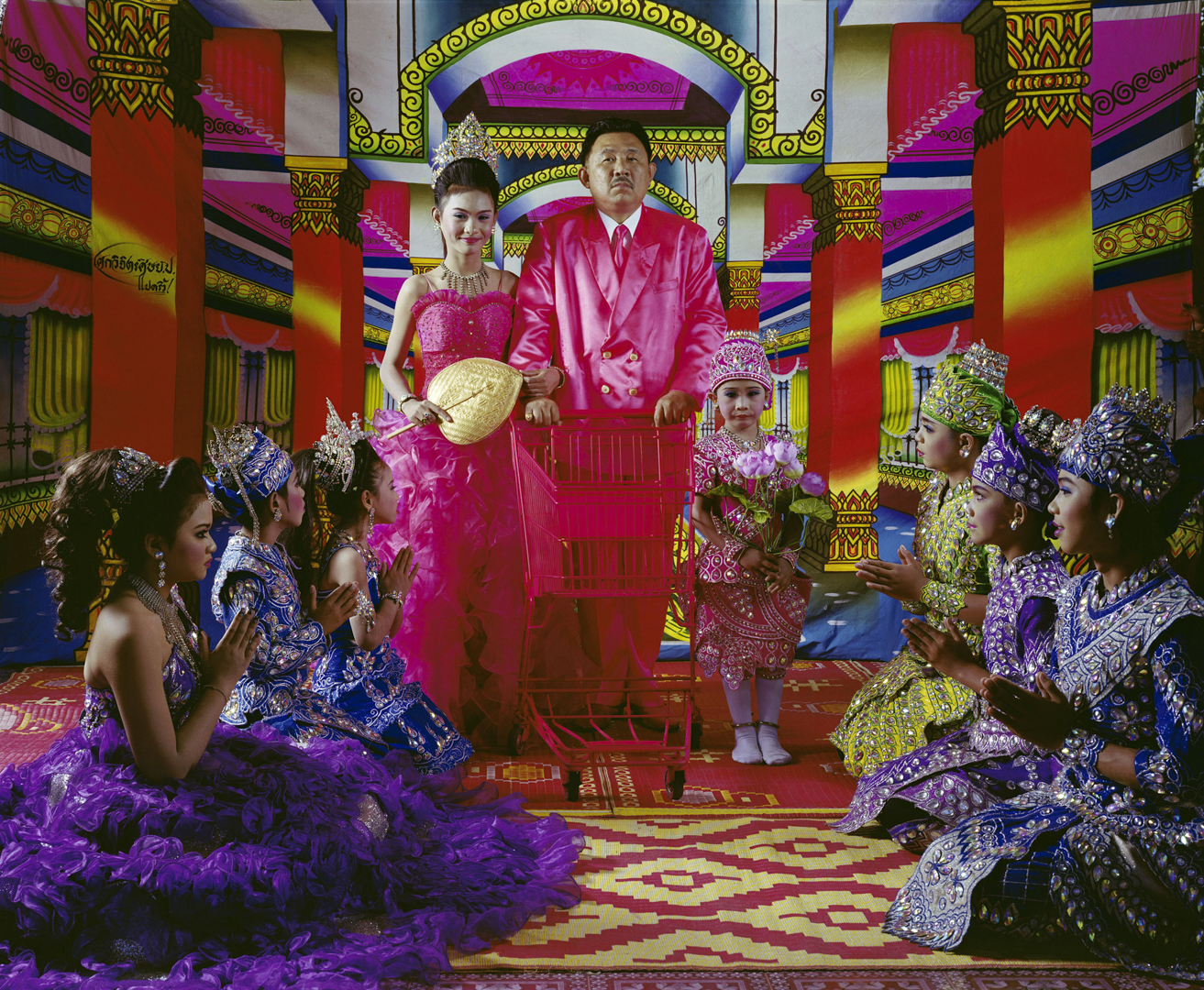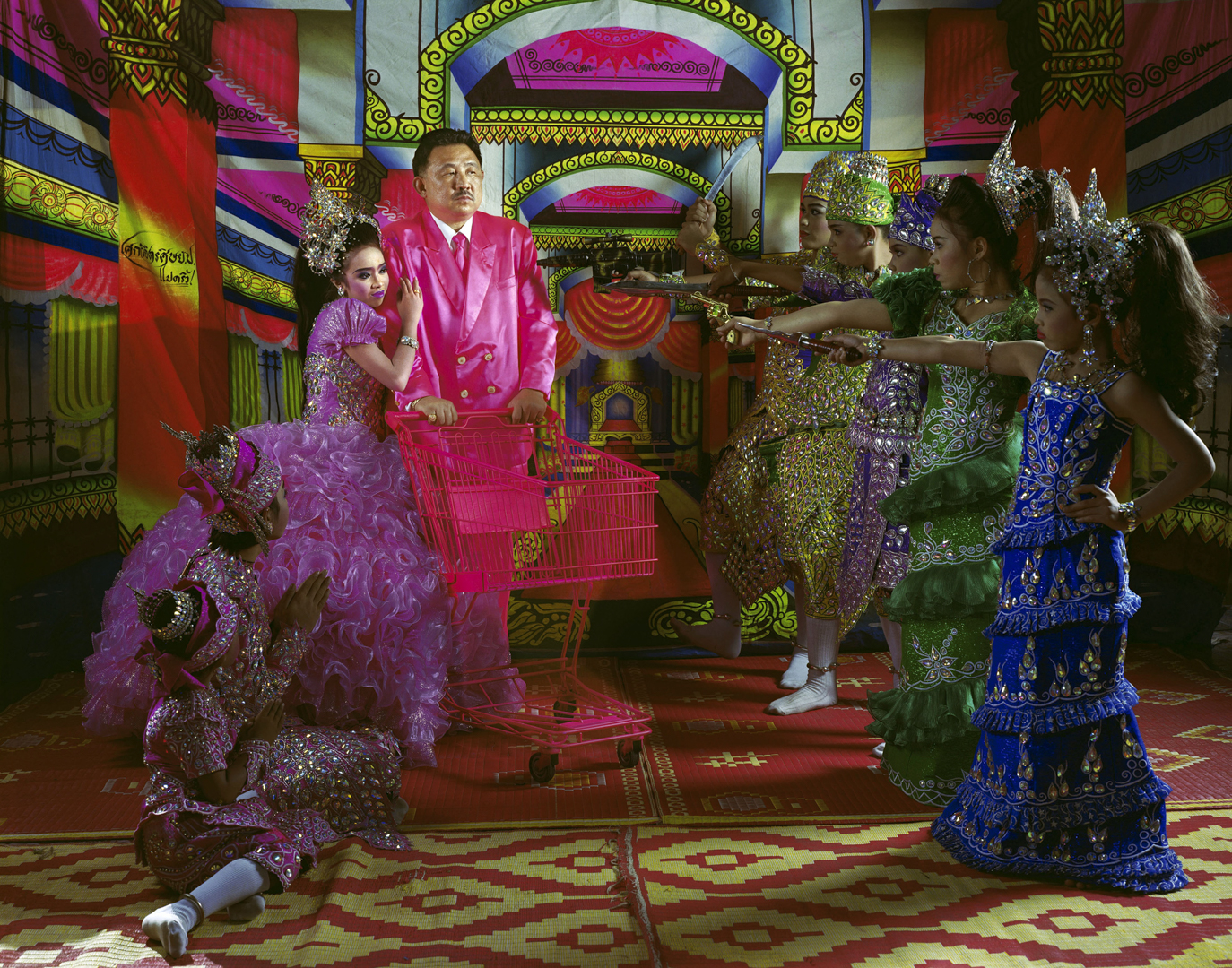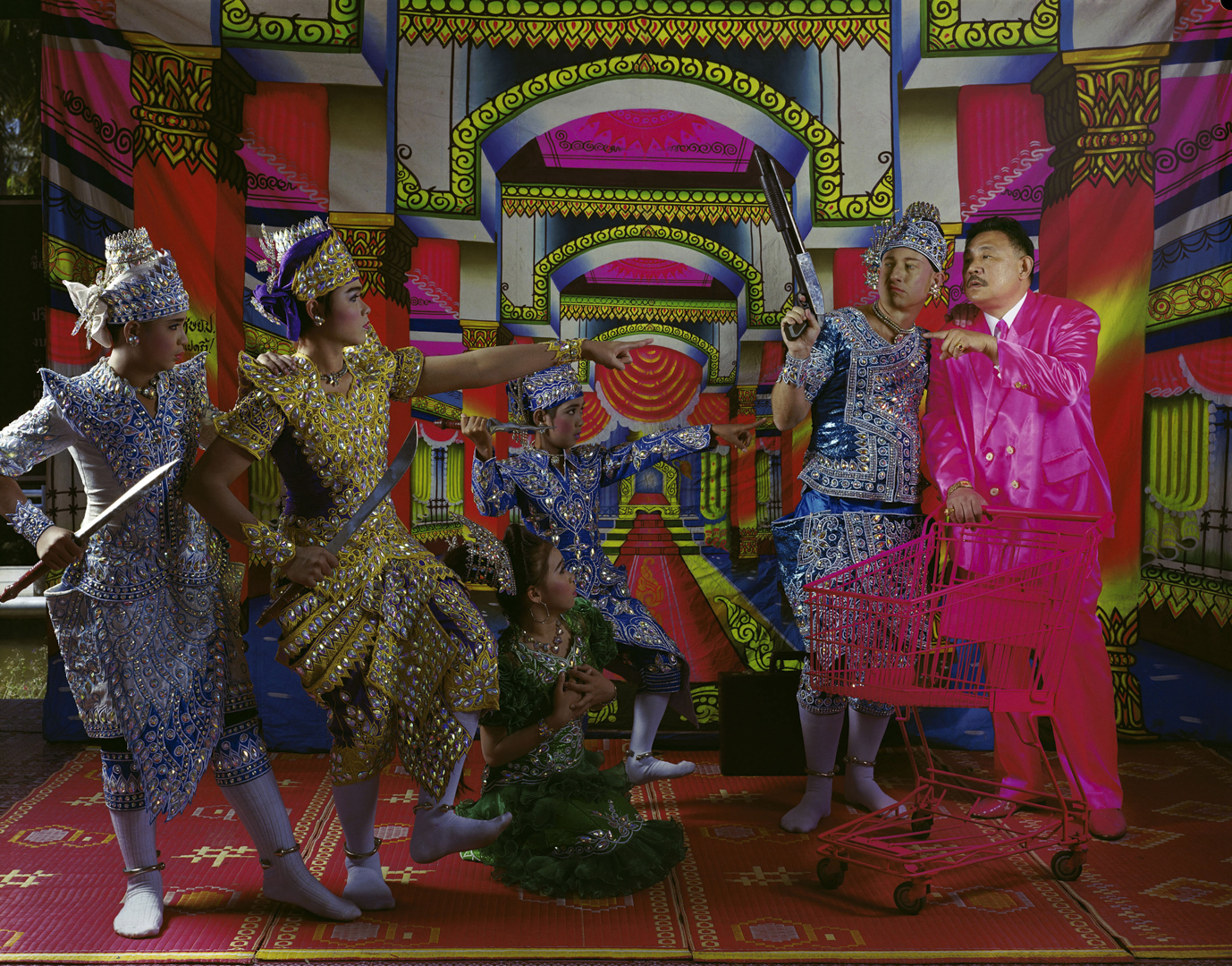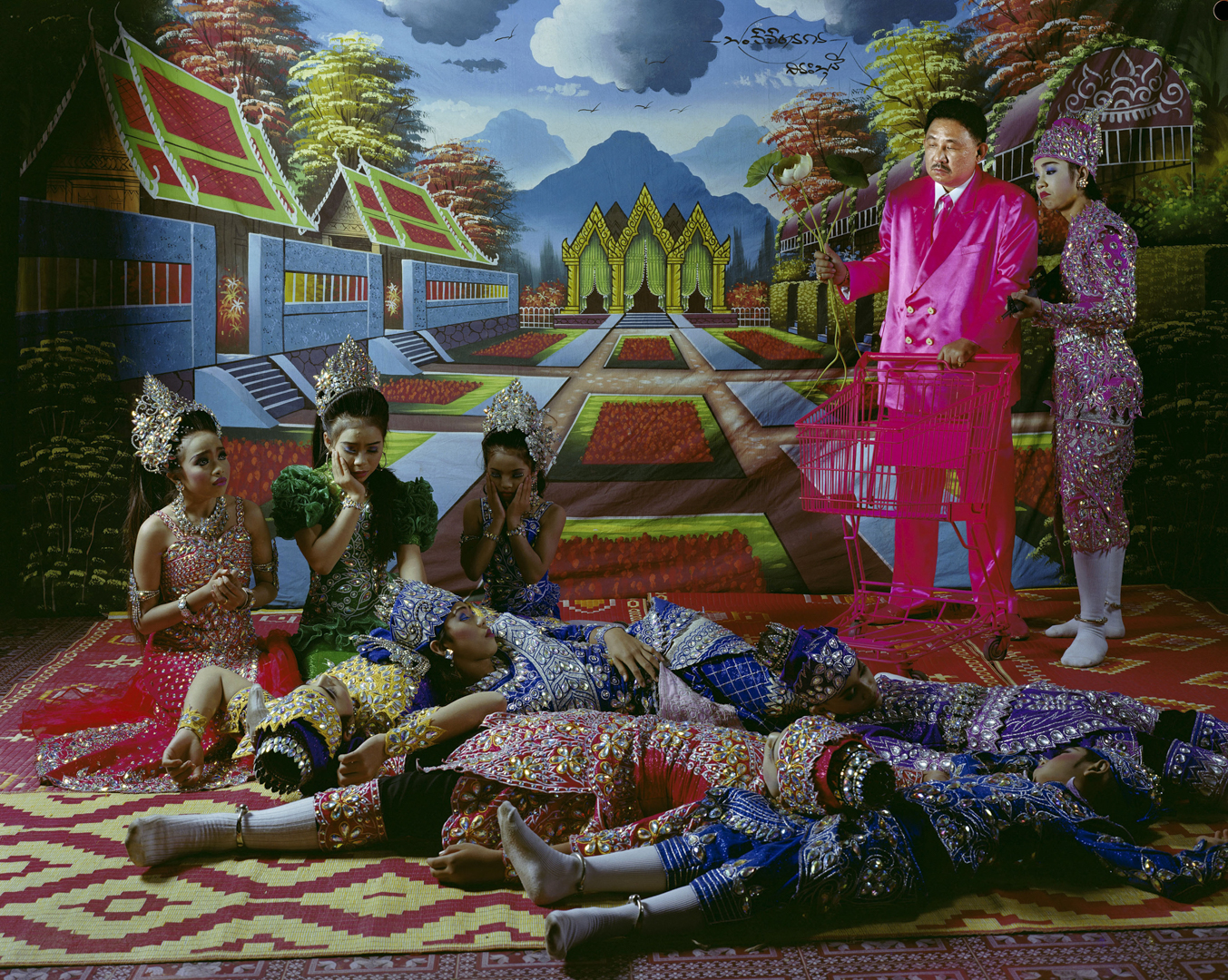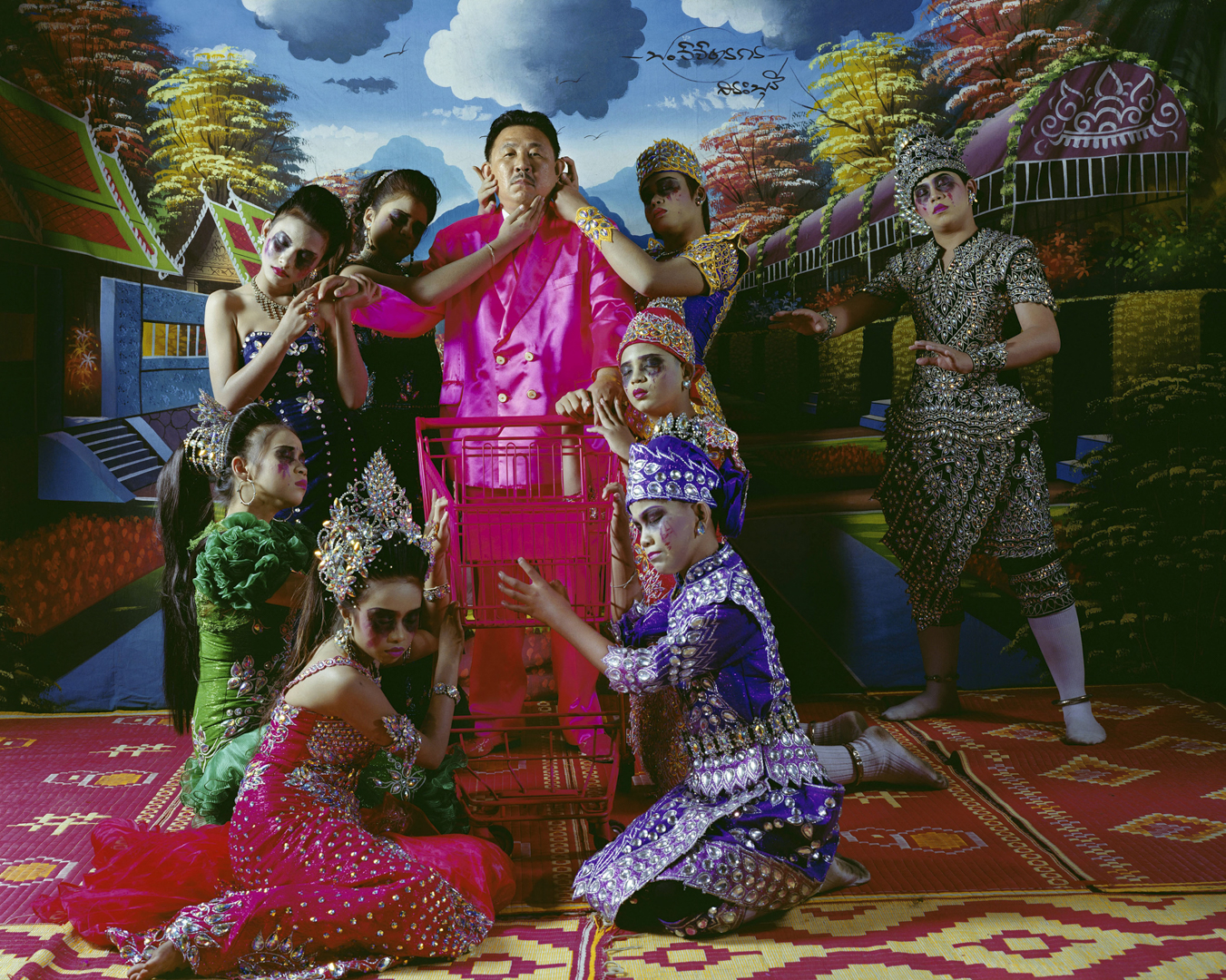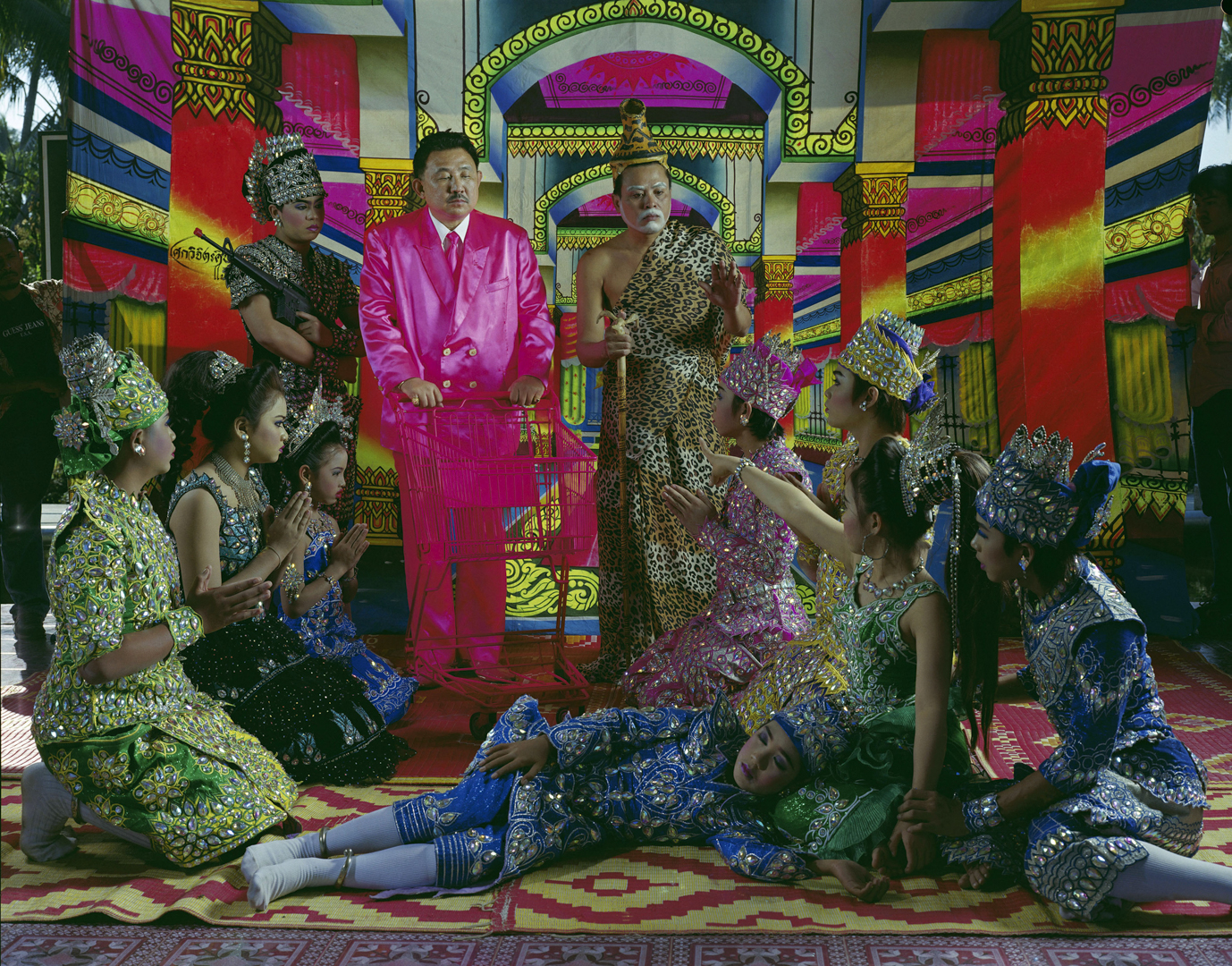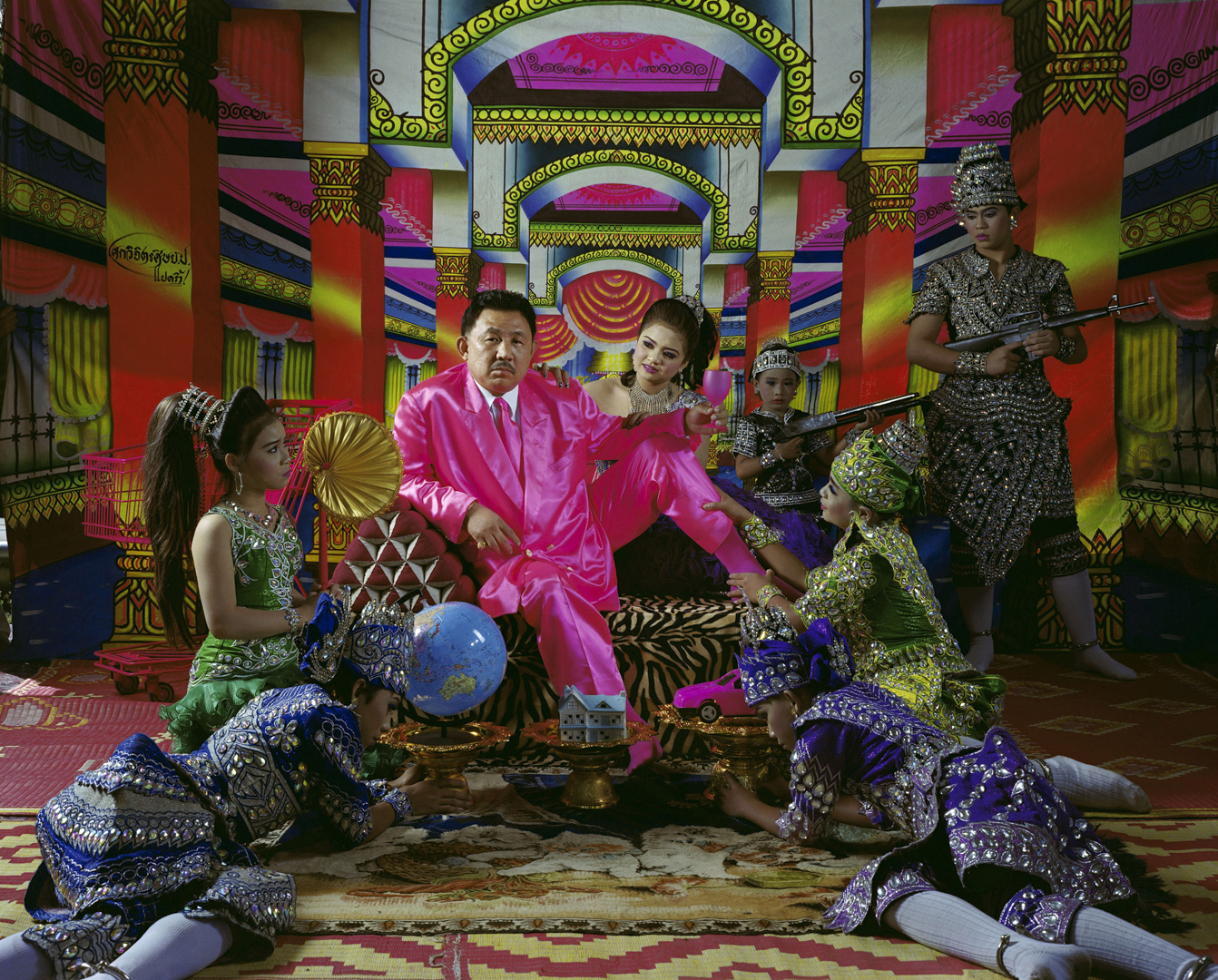Pink Man Begins
The idea of Pink Man came to me when I went out shopping at the newest mall in town. This mall is very big – like a factory – so bright with thousands of fluorescent lamps, all kinds of goods kept on shelves orderly. A lot of buyers were tirelessly enjoying filling their trolleys with goods, getting into long queues to pay – like going to an amusement park. To what extent has consumerism brainwashed us? That life values are measured by materials that one possesses.
Pink Man is my upset and alienated feeling towards the concept of consumerism which has been accepted simply and without consideration by Thai society. I feel that this system has enslaved us without our realization. Moreover, we are being forced to act in the same way : there is a move towards uniformity. Pink Man is wandering quietly and smilelessly, like a robot, in the opulent and busy business area of Silom street, where there is a lunch market named La-lai-sap (melting money) for office men and women. Pink, like in the photo, is considered generally by high class group of Thai people as tastelessness and vulgarity which is used commonly by night-life girls and comedians. In additional to this reason, I intentionally use Pink color in order to subvert the aesthetics of local art.
Pink Man performance by Sompong Thawee
Pink Man on Tour, Thailand
“The Pink Man on Tour” celebrates Amazing Thailand, the Thai government’s tourism promotion campaign.
According to Manit Sriwanichpoom, it’s about attracting as many tourists as possible to make easy bucks by selling our culture and natural resources.
Horror in Pink
Manit Sriwanichpoom uses black and white photographs taken during the massacres of October 6 and 14, 1976 in Bangkok.
At the time, Interior Minister Samak Sundaravej ordered the use of force against pro-democracy demonstrators. In 2000, the same Samak Sundaravej was elected governor of Bangkok. Manit Sriwanichpoom does not understand this election.
In these very violent period photographs, the artist adds a color image of Pink Man. This character seems to observe these scenes of barbarism with a lot of hindsight, he looks at them like an ordinary spectacle. More than in any other series, Pink Man is represented as a man without soul and conscience. These photomontages show Manit Sriwanichpoom’s concern for the state of Thai collective consciousness. It seems to suggest that the lessons of history have only served to establish a value system based on the satisfaction of consumer impulses.
Pink Man on European Tour
The Pink Man, a symbol of conspicuous consumption and vulgarity, trundles along with his pink supermarket cart, chewing up the scenery, shopping for tourist attractions.
Like most tourists today, he travels not to learn but to consume: to collect exotic destinations, to shop, to show off, to stay in resource – wasting hotels that import more goods and services than they export. The hotels get rich while the country goes into debt.
Manit Sriwanichpoom
Pink Man performance by Sompong Thawee
Pink Man in Paradise (Mister Pink Series), Bali
Manit Sriwanichpoom shows Mister Pink in different places in Bali, less than a year after the attack. Alone, like a lost tourist, he poses in front of sacred temples, landscapes emblematic of the tourism of yesteryear.
October 12, 2002, In the middle of the night, a bomb exploded in front of a Balinese nightclub, killing 202 tourists, mostly Australians and injuring hundreds. It was an unprecedented terrorist attack, never seen before in the history of this tropical tourist paradise.
With this act, Islamic extremist terrorists blew to smithereens the partying and revelry that they saw as a manifestation of hell on earth, leaving behind, among the ruins, panic, incomprehension, outrage and grief for the people who lost their loved ones. For the rest of us, it has become clear that “No place is safe anymore in this world.”
The war on terrorism, as waged by US President George W. Bush and his allies, seems to be adding fuel to the fire instead of tackling the problem at its roots. The rug has been pulled from under our feet. No less so for Pink Man, the embodiment of consumerism.
Like other average tourists and thrill-seekers everywhere, Pink Man’s ego is in a limbo of paranoia and instability, his naivety gone but his wisdom unborn, as he roams all over the island of Bali, searching for his paradise lost.
Pink Man performance by Sompong Thawee.
Pink Man in Venice
“The whole visible universe is just a store of pictures.”
Manit Sriwanichpoom shows Pink Man out of step with the landscape, in a culture that is losing all its soul because of consumerism.
Manit Sriwanichpoom
Hungry Ghost
With his shopping cart that allows him to store and his phone that allows him to communicate, Pink Man wants to conquer the world. He is like a hungry ghost in a society where everything is consumed, locked up in a hi-tech comfort that imprisons him.
“If King Kong stood for untamed savagery and Godzilla for nature’s revenge on nuclear age man, then Pink Man the monster is surely their exact opposite. There he stands, in his shiny pink suit, the sum total of contemporary man the monster, as built and bred by extreme capitalism.
His whole being ruled by insatiable greed, unchecked by any belief system, social, religious or political, he has become one of the ‘hungry ghosts’ that dutiful Buddhists are supposed to pity and to save by sending them vibrations of love. Through such acts of kindness, we hope to save ourselves from Hell. But alas, we are already there, forever hungry in Hi-tech Hell. How strange that we yearn so much to kill Godzilla and King Kong, yet we condone the existence of Pink Man the monstrous Hungry Ghost. He roams our streets with impunity,and we do nothing.”
Pink Man performance by Sompong Thawee
Manit Sriwanichpoom
Life in Pink, Paris
With this series, what Manit Sriwanichpoom shows us is consumption as an illusion, as a simulacrum of happiness. To see life in pink is not to see life, it is to cover it with a pink painting that erases the specificities of culture and the particularities of the human being.
It seeks to show that there is no longer any real interest in what is seen or visited. Pink Man’s goal is to cross as many places as possible with his shopping cart, the object in which all his desires are accumulated and the embodiment of the pleasure of consuming. Happiness is reduced to this object, such as the holiday photographs taken by tourists to show that they have travelled.
Culture is neither apprehended nor appreciated, it is consumed. The artist denounces the consumerist excesses of our society with one of his photographs which, for example, inevitably evokes a painting by Manet. By likening his character to those in “Lunch on the Grass”, he shows that Pink Man wants to make everything in his image by impregnating it with pink varnish.
If in French and Western culture, this colour is associated with happiness and love, in the artist’s case, it is associated with bad taste and vulgarity.
Beijing Pink
Manit Sriwanichpoom, the Thailand photographer, has come up with a unique variation on his prestigious Pink Man Series. His latest work, Beijing Pink, is the most recent in a decade. In this new series a Pink Trolley (Shopping cart), replaces the Pink Man as the important symbol attacking the apparent present day globalization, and consumerism.
The Pink Trolley, as the ghost spirit of consumerism, is found conspicuously around Beijing while the city is enjoying a period of high speed development.
The shopping cart is silently witnessing changing scenes between the old “things”, and the new “things”, revealing a cunning expression of conflicts of dialogue between things being highlighted, or ignored, and between those who had the discourse of power, and those who lose it.
The 18 pictures in this series explore the meaning of objects in the social scenery, while relying on the conversation between the Pink shopping cart and these objects. The new Beijing Pink varies from the folly shown in the former Pink Man series. Contradictions pop out from the silent scenes disclosing the vanity of worshipping wealth and power as crucial characteristics in the growth of the city. An allegorical creation is extended with Beijing Pink. Manit turns the social observation and critique into poetic symbolization, and opens questions about reality.
Highland Gallery
Pink Man Opera, Thailand
“To perceive the devil’s discuss as the lotus”
“Those who love us fit on a small pelt; those who hate us fit on a mat”
“Do not export family secrets; do not import trouble from outside”
“A lotus leaf can’t hide a whole dead elephant”
“A blind man groping to see an elephant with his hands”
“A pestle in the hand, religious tenets in the mouth. (One who holds a weapon but spouts morality, a hypocrite)”
“Egging on people to dance, pounding a boat to spring a leak”
“Lounging Tiger gets to eat”
Thai proverbs.

